Your cart is currently empty!
The 100 Most Famous Artists of All Time
In this exploration of the 100 most famous artists of all time, we invite you on a fascinating journey through the periods and styles that have defined the history of art. From the Renaissance to Romanticism, passing through Baroque and Impressionism, each artist featured here has indelibly shaped the world of art as we know it today.
Whether you are an art enthusiast or a curious newcomer, this collection opens the door to the works and lives of the greatest masters, whose influence continues to resonate across the ages. Dive into this captivating journey and let yourself be transported by the timeless power of human creativity.
1- Vincent Van Gogh (1853-1890)
Vincent van Gogh was a 19th-century Dutch painter, renowned for his vibrant and emotionally charged works. Born on March 30, 1853, in Zundert, Netherlands, he is often regarded as one of the greatest artists in art history, despite the personal struggles and limited recognition he faced during his lifetime.
Van Gogh is best known for his paintings filled with intense colors and expressive brushstrokes. His most famous works include Starry Night, Sunflowers, and Van Gogh’s Bedroom in Arles. His style, often described as Post-Impressionist, is characterized by vivid colors, dynamic compositions, and an emotional approach to visual representation.
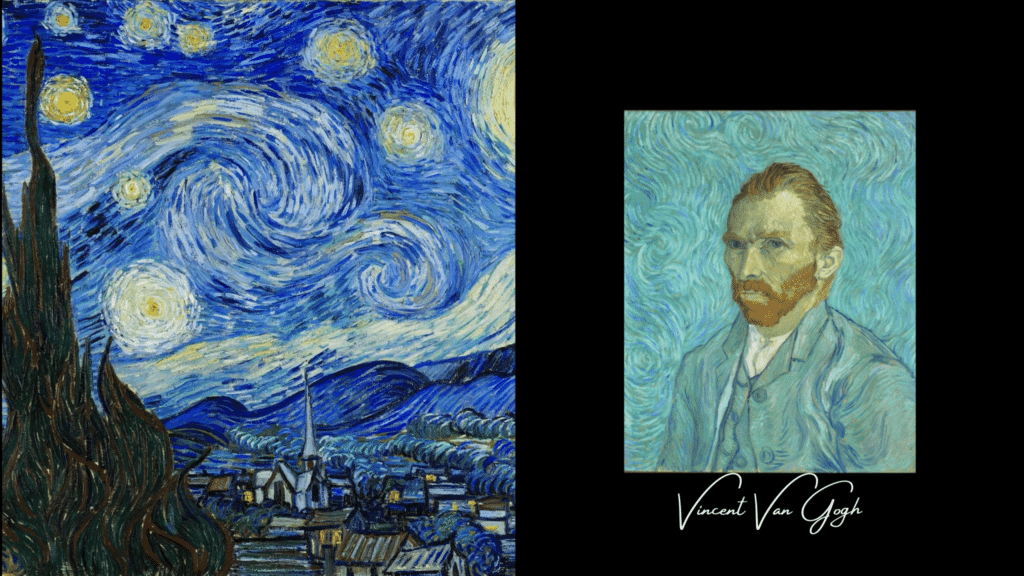
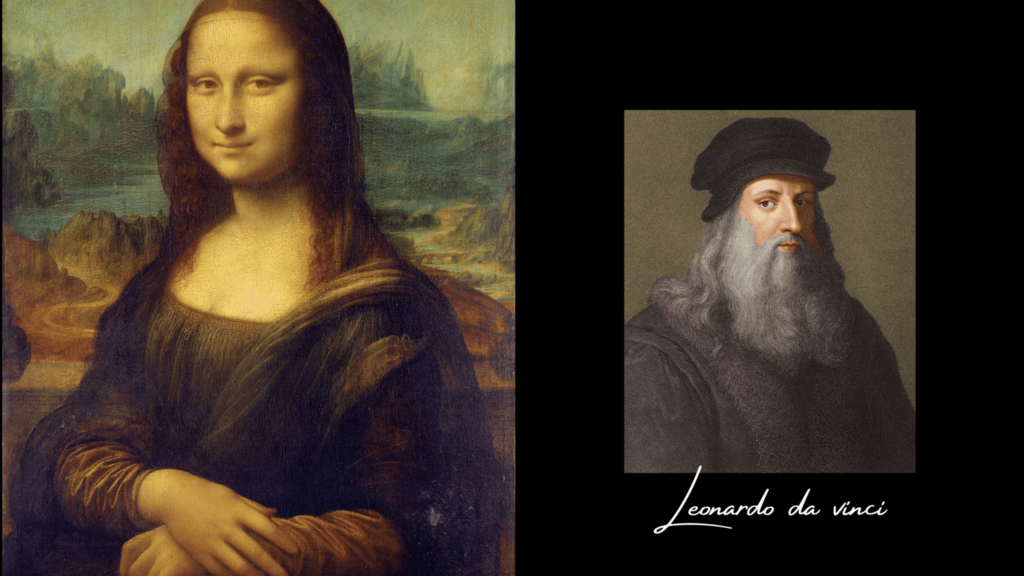
2- Leonardo da Vinci (1452-1519)
Leonardo da Vinci (1452-1519) is one of the most iconic figures of the Italian Renaissance, celebrated for his artistic, scientific, and inventive genius. Born in Vinci, Tuscany, Leonardo is best known for his paintings, but his influence extends far beyond the world of art.
Painter: Leonardo da Vinci created some of the most famous artworks in history. His masterpieces include The Mona Lisa, with its enigmatic smile and captivating gaze, and The Last Supper, a monumental fresco depicting Jesus’ final meal with his disciples. His works are renowned for their technical innovation and emotional depth.
3- Gustav Klimt (1862-1918)
Gustav Klimt (1862-1918) is one of the most iconic artists of the Art Nouveau movement and the Vienna Secession, an Austrian artistic movement at the end of the 19th century. Born in Vienna, Klimt is renowned for his richly ornamental works, symbolic motifs, and lush use of color, particularly gold.
Klimt’s distinctive style is characterized by decorative and sensual compositions, often dominated by female figures. One of his most famous phases is the “Golden Period,” during which he used gold leaf, influenced by Byzantine art. Masterpieces such as The Kiss (1907-1908) and Portrait of Adele Bloch-Bauer I (1907) are emblematic of this era.


4- Johannes Vermeer (1632-1675)
Johannes Vermeer (1632-1675) is one of the most renowned painters of the Dutch Golden Age, famous for his serene and intimate interior scenes that precisely capture light and detail. Although he was not prolific—only about 34 to 36 paintings are attributed to him—Vermeer is celebrated for his mastery of technique, composition, and especially his use of natural light.
Vermeer spent almost his entire life in Delft, Netherlands, and his works often depict scenes of everyday life, particularly private moments unfolding in domestic interiors. He excelled at rendering textures and materials, capturing delicate light effects, and playing with shadow. The artist frequently used a subdued and harmonious color palette, with a preference for blues, yellows, and soft tones.
5- Claude Monet (1840-1926)
Claude Monet (1840-1926) was one of the founders and the most famous representative of Impressionism, an artistic movement that revolutionized painting in the late 19th century. Born in Paris, Monet spent much of his life in Normandy and Giverny, where he created some of his most iconic works.
Monet is known for his distinctive technique of quick, visible brushstrokes and his bold use of color to capture the fleeting effects of light and atmosphere. His painting Impression, Sunrise (1872), depicting the port of Le Havre at sunrise, gave its name to the Impressionist movement.


6- Eugène Delacroix (1798-1863)
Eugène Delacroix (1798-1863) is one of the leading figures of French Romanticism, an artistic movement that opposed Neoclassicism by emphasizing emotion, imagination, and individuality. Known for his dramatic and expressive compositions, Delacroix left a lasting mark on his era with his vibrant style, intense colors, and themes often inspired by literature, history, and exoticism.
One of his most famous works is Liberty Leading the People (1830), which symbolizes the July Revolution in France. This powerful painting, depicting an allegorical figure of Liberty leading a group of revolutionaries, has become an icon of the struggle for freedom and is now displayed at the Louvre. With this work, Delacroix demonstrated his ability to capture both movement and emotion, two defining elements of his style.
7- Vassily Kandinsky (1866-1944)
Vassily Kandinsky (1866-1944) was a Russian painter and art theorist, widely regarded as one of the pioneers of abstract art. Born in Moscow, he initially studied law and economics before turning to painting at the age of 30, which marked the beginning of a profoundly influential artistic career. Kandinsky is best known for breaking away from figurative tradition to explore a purely abstract artistic language, where forms, colors, and lines exist independently of the representation of the external world.
Kandinsky strongly believed in the spiritual power of art, viewing painting as a means to express inner emotions and states of mind. His work increasingly focused on color theory and the connections between music and painting. He saw colors and shapes as having emotional and spiritual resonance, and sought to use them to evoke inner responses in the viewer, much like music does.

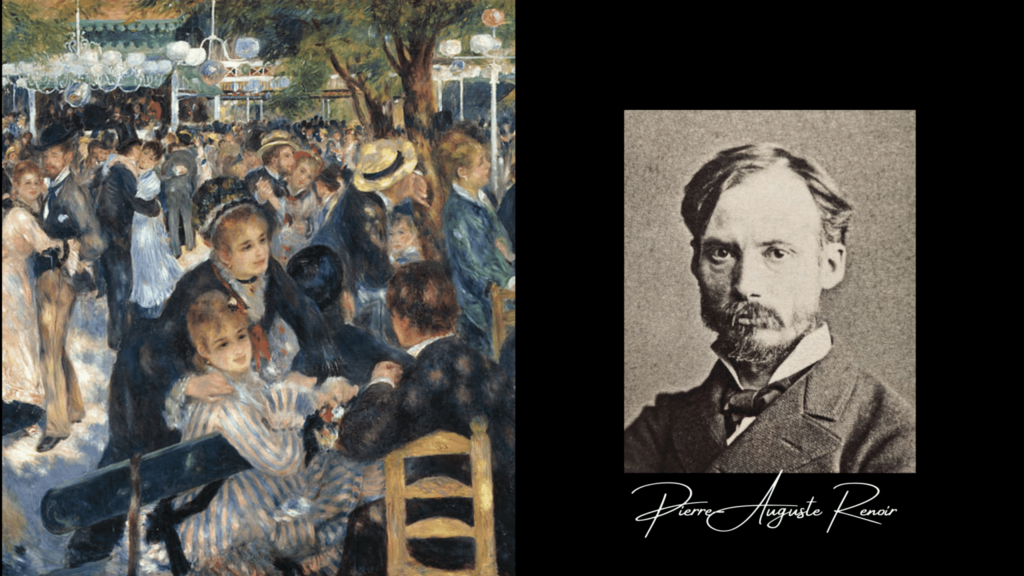
8- Pierre-Auguste Renoir (1841-1919)
Pierre-Auguste Renoir (1841-1919) is one of the most iconic painters of the French Impressionist movement. Renowned for his luminous and colorful works, Renoir masterfully captured the beauty of everyday life, particularly through scenes of social gatherings, landscapes, and portraits.
His style is characterized by the use of light, fluid brushstrokes that impart a sense of softness and warmth to his compositions. Renoir focused on depicting light and atmosphere, using delicate play of shadows and vibrant palettes.
9- Rembrandt van Rijn (1606-1669)
Rembrandt van Rijn (1606-1669) is one of the greatest masters of Baroque art and a cornerstone of 17th-century Dutch painting. Known for his striking portraits, historical and religious scenes, as well as his etchings, Rembrandt left a profound mark on art history with his extraordinary mastery of chiaroscuro and his talent for capturing the humanity of his subjects.
His style is distinguished by powerful light contrasts that highlight the emotion and psychological depth of his characters. Rembrandt is especially recognized for his ability to manipulate light, creating intense and dramatic atmospheres. His portraits, whether commissioned or self-portraits, reveal introspective gazes and complex expressions, uncovering the essence of the individuals he portrays.
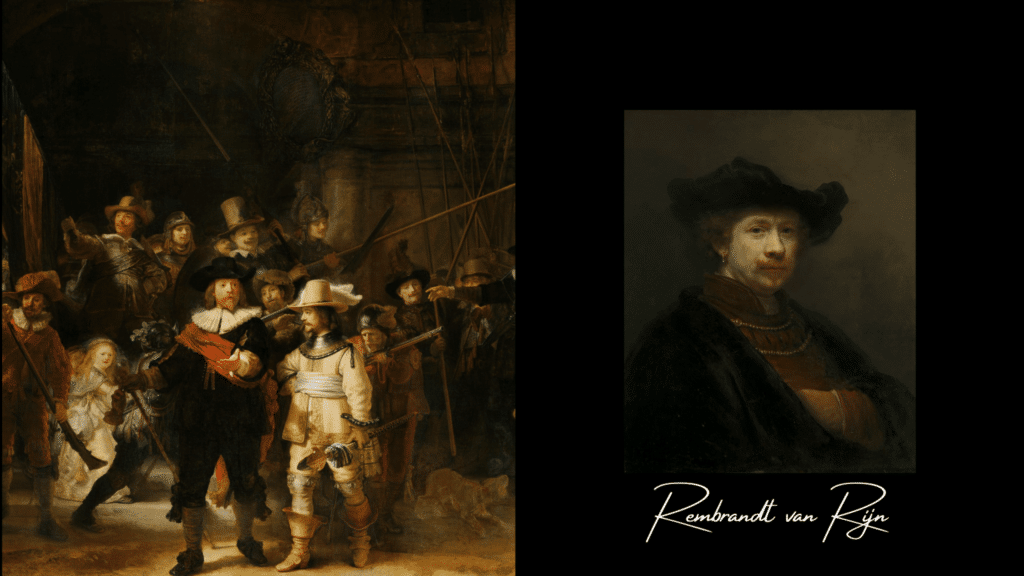
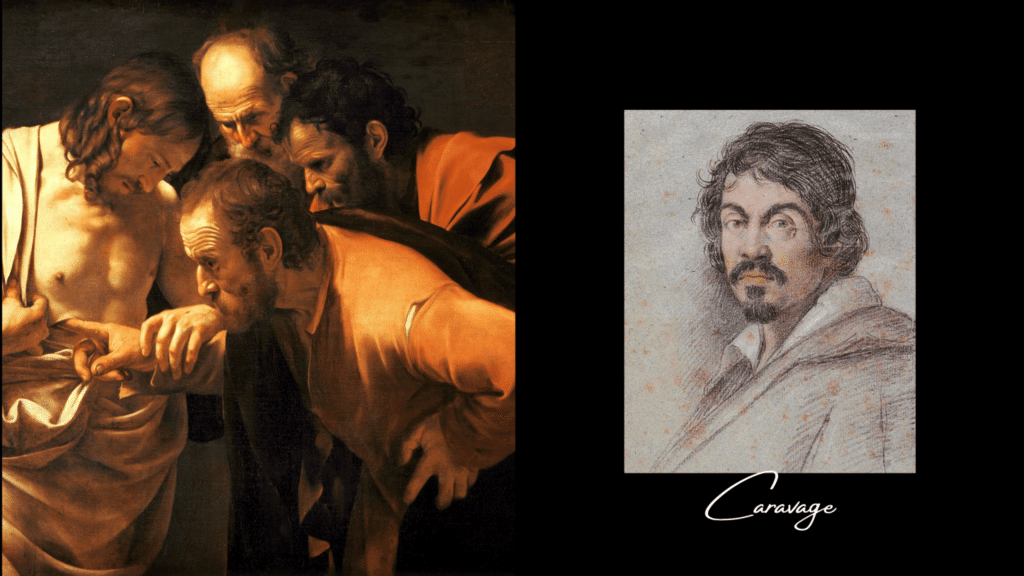
10- Caravaggio (1571-1610)
Caravaggio, whose real name was Michelangelo Merisi da Caravaggio (1571-1610), was a revolutionary Italian painter of the early 17th century and one of the most influential figures in Baroque art. He is renowned for his bold use of chiaroscuro, a technique that creates dramatic contrasts between light and shadow, imbuing his works with unprecedented emotional intensity.
Caravaggio broke away from the artistic conventions of his time by favoring a realistic and naturalistic approach. His characters, often drawn from the lower classes, are depicted with raw realism, sometimes shocking his contemporaries. He drew inspiration from the streets, painting figures with marked features of life, capturing striking details of weary bodies, tattered clothing, and faces etched with time.
11- Michelangelo Buonarroti (1475-1564)
Michelangelo Buonarroti (1475-1564) is one of the greatest geniuses of the Italian Renaissance, celebrated for his remarkable contributions as a sculptor, painter, architect, and poet. His monumental work embodies the ideal of human and divine beauty, marked by an exceptional mastery of anatomy and profound spiritual depth.
Michelangelo is perhaps most famous for his sculptures, including David (1504), an imposing and detailed representation of the biblical hero, symbolizing human strength and beauty. Another of his sculptural masterpieces, Pietà (1499), is an emotional work depicting the Virgin Mary holding the dead Christ in her arms, a poignant testament to the finesse and expressiveness of his art.
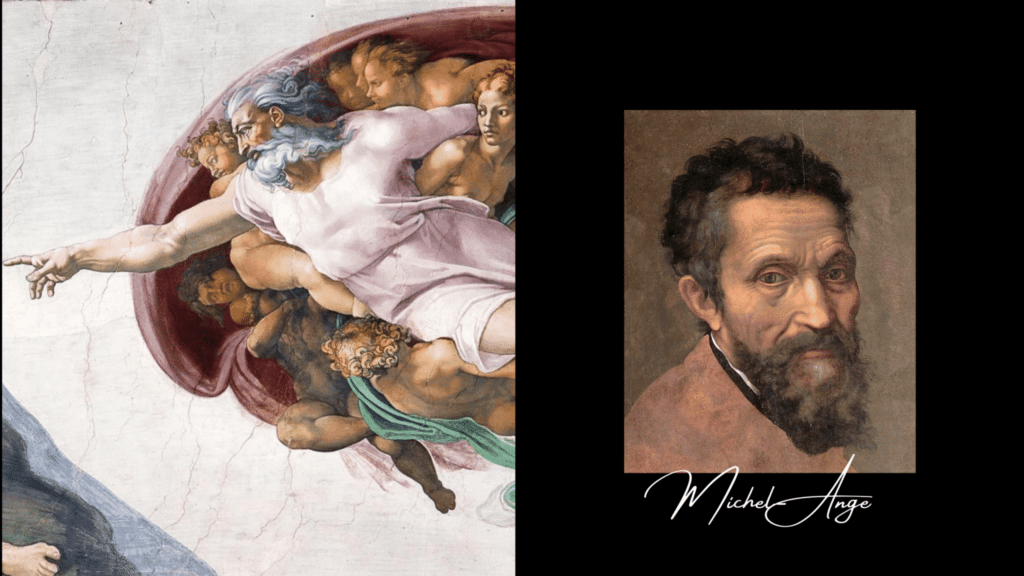
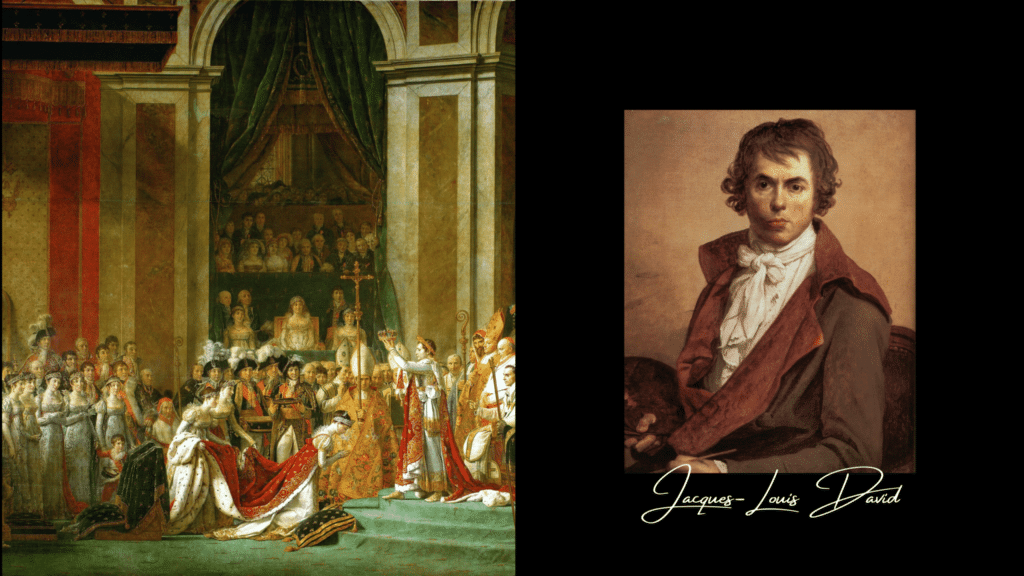
12- Jacques-Louis David (1748-1825)
Jacques-Louis David (1748-1825) is a major figure in Neoclassicism, an artistic movement that draws inspiration from the forms and ideals of Greco-Roman antiquity. Known for his rigorous compositions and attention to detail, David played a crucial role in defining the Neoclassical style. His work is distinguished by formal clarity and controlled emotion, aiming to promote moral and heroic values.
Among his most famous works, The Oath of the Horatii (1784) is emblematic of Neoclassicism, depicting a Roman historical scene with visual precision and grandeur. This painting illustrates sacrifice and virtue through a stern composition and subdued colors.
13- William-Adolphe Bouguereau (1825-1905)
William-Adolphe Bouguereau (1825-1905) was a French painter renowned for his academic style and realistic, idealized depictions of the human figure. A prominent member of the Académie des Beaux-Arts, Bouguereau is celebrated for his works that highlight remarkable technical virtuosity and meticulous attention to detail.
His paintings are characterized by an exceptional mastery of rendering skin, textures, and light effects, allowing him to create portraits and genre scenes of great finesse and beauty. Works such as The Child with the Goldfinch (1866) and The Birth of Venus (1879) showcase idealized figures in harmonious and elegant compositions, often inspired by mythological or pastoral themes.


14- Piet Mondrian (1872-1944)
Piet Mondrian (1872-1944) was a Dutch painter and a pioneer of geometric abstraction and neoplasticism. His work marked a radical shift from figurative representation to a purely abstract approach, aiming to express universal order and visual purity.
Mondrian is best known for his compositions that use horizontal and vertical lines and blocks of primary colors—red, blue, yellow—along with shades of gray and black. His works, such as Composition in Red, Blue, and Yellow (1930), exemplify his geometric rigor and economy of means, which are central to his style.
15- Edgar Degas (1834-1917)
Edgar Degas (1834-1917) was a French painter and sculptor renowned for his innovative depictions of dance, everyday life, and portraits. A key member of the Impressionist movement, Degas is distinguished by his unique and often experimental approach to composition and technique.
Degas is especially famous for his paintings of ballet dancers, such as The Dance Class (1874) and Dancers at Rest (1879). He captures not only the grace and elegance of ballet but also the intimate and less glamorous aspects of the dancers’ preparation. His use of unusual perspectives and dynamic framing reflects his interest in capturing movement and fleeting moments.

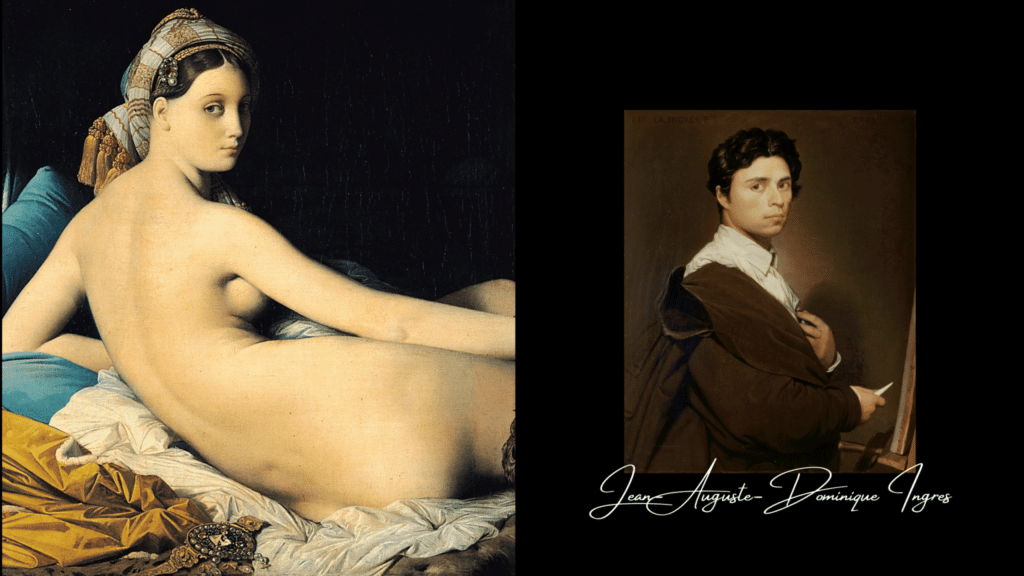
16- Jean-Auguste-Dominique Ingres (1780-1867)
Jean-Auguste-Dominique Ingres (1780-1867) was a French painter renowned for his academic style and detailed portraits. A prominent figure in Neoclassicism, Ingres is distinguished by his meticulous attention to detail and his commitment to an idealized representation of the human form.
His art is characterized by technical precision and compositional clarity. Among his most famous works, La Grande Odalisque (1814) exemplifies his mastery of drawing and his preference for elegant compositions and idealized figures. The painting depicts a reclining woman in a languorous pose, with a keen focus on body details and textures.
17- Artemisia Gentileschi (1593-1656)
Artemisia Gentileschi (1593-1656) was an Italian Baroque painter renowned for her powerful and dramatic representations of female figures. The daughter of artist Orazio Gentileschi, she distinguished herself with exceptional talent, masterful technique, and the ability to capture intense emotions.
Her work is characterized by a bold use of chiaroscuro, a technique that creates strong contrasts between light and shadow, and by a dramatic portrayal of religious and mythological themes. One of her most famous works is Judith Slaying Holofernes (1614-1620), which depicts Judith’s courage and determination in a scene of intense violence. This painting is often interpreted as an expression of female strength and personal vengeance.
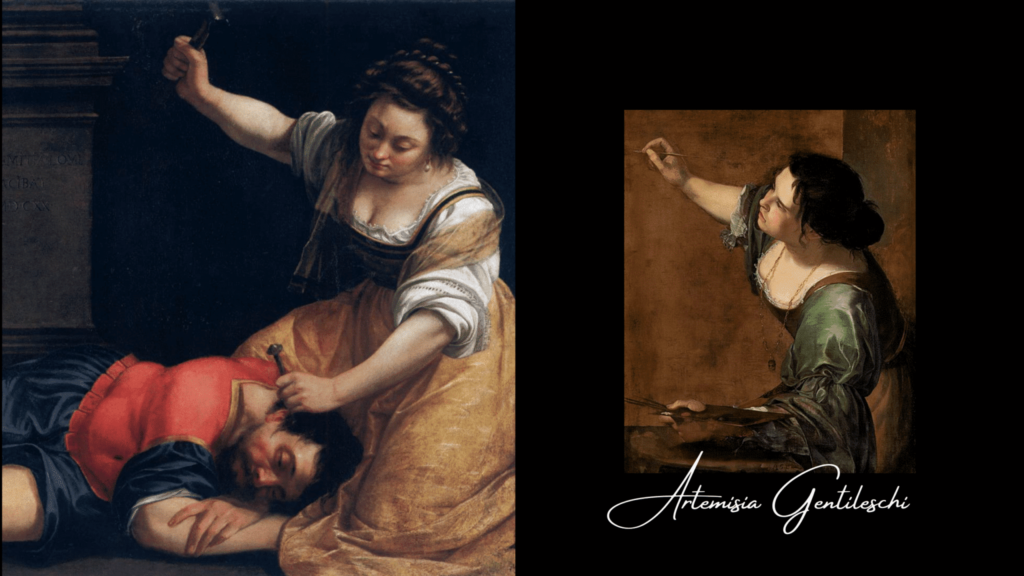
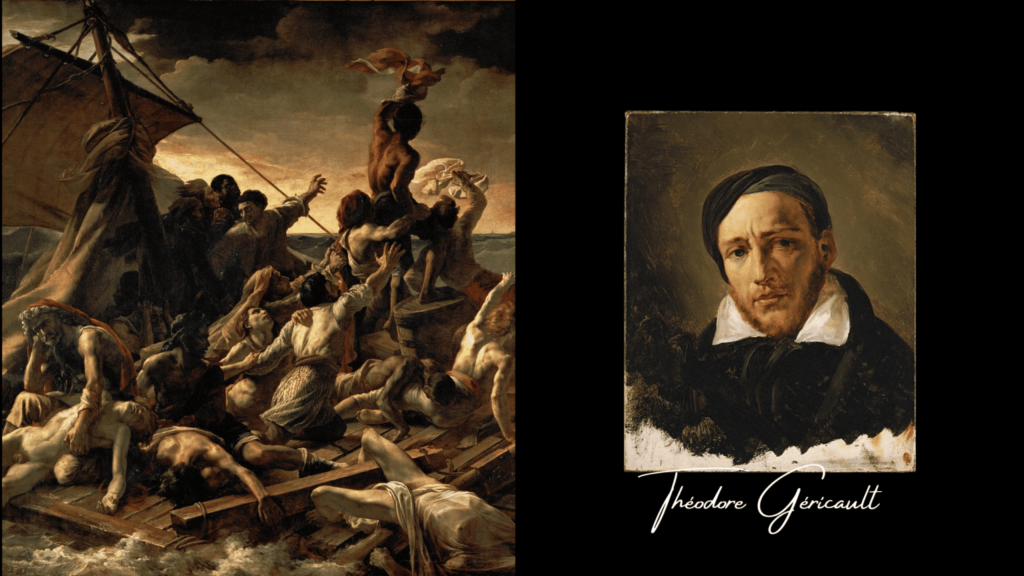
18- Théodore Géricault (1791–1824)
Théodore Géricault (1791-1824) was a French painter and lithographer of the early 19th century, often regarded as a precursor to the Romantic movement in France. He is best known for his iconic work The Raft of the Medusa (1819), a dramatic and realistic portrayal of the wreck of a French frigate, which marked a significant shift towards engaged and emotional art.
Géricault’s interest in the human condition, suffering, and heroism is evident in his numerous studies of human figures and horses. His style is characterized by an exceptional mastery of movement, light, and texture, influenced both by classical masters and contemporary artists. Despite his career being cut short by his untimely death at the age of 32, his work had a lasting impact on the development of Romantic painting, and his bold approach continues to inspire generations of artists.
19- Édouard Manet (1832–1883)
Édouard Manet (1832-1883) stands as one of the most influential figures in 19th-century French painting and a pioneering force in modern art. Often regarded as a precursor to Impressionism, Manet, however, maintained a distinct approach, exploring the connections between academic painting and more innovative methods. His provocative works, blending raw realism with modernity, disrupted the artistic conventions of his time while employing a vibrant palette.
Among his most famous works are Le Déjeuner sur l’herbe (1863) and Olympia (1863), both of which caused scandals for their bold depiction of nudity and direct engagement with the viewer. Manet also depicted urban life in Paris with pieces like Un Bar aux Folies Bergère (1882).
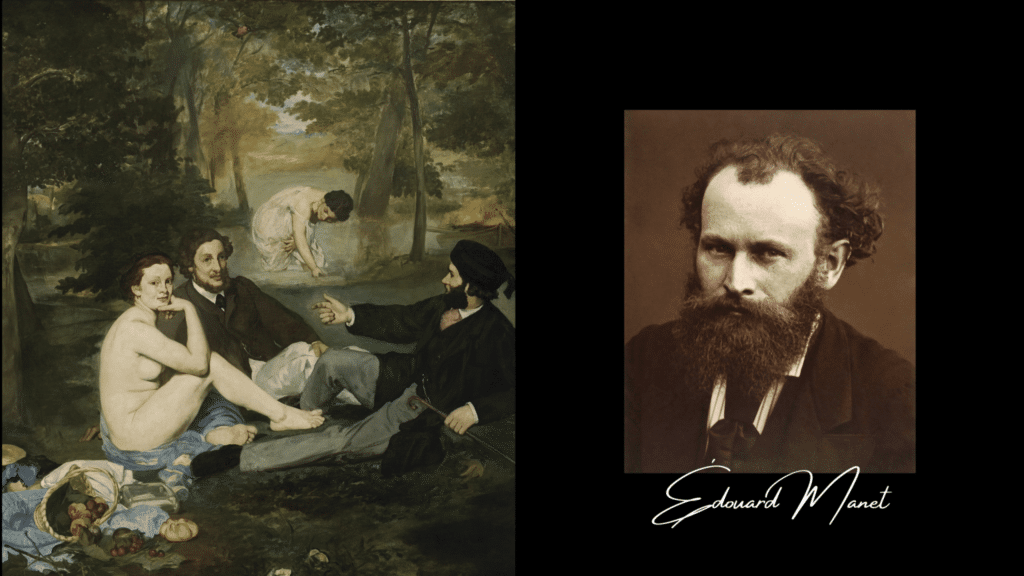

20- Joseph Mallord William Turner (1775–1851)
Joseph Mallord William Turner (1775-1851) is celebrated as one of the greatest landscape painters in Western art history. Known for his dramatic compositions, Turner’s work places a strong emphasis on light, movement, and atmosphere, transforming landscape painting into a form of visual poetry. His style anticipated the developments of Impressionism and even abstraction.
Turner is renowned for his powerful seascapes, such as The Battle of Trafalgar (1824) and The Fighting Temeraire (1839), where he depicts maritime scenes with emotional intensity and bold use of color. His landscapes, including Rain, Steam and Speed (1844), often go beyond mere representation to explore emotional states, the fury of nature, and the relationship between humanity and the universe.
21- Peter Paul Rubens (1577–1640)
Peter Paul Rubens (1577-1640) was a Flemish Baroque painter renowned for his grandiose, dynamic, and sensual compositions. As one of the most influential artists of his time, Rubens made a significant mark on art history with his vibrant style, characterized by masterful use of color, light, and movement. His works encompass a wide range of subjects, including mythological, religious, historical scenes, as well as portraits and landscapes.
Primarily based in Antwerp, Rubens’ influence extended across Europe through commissions for royal and aristocratic patrons in Spain, Italy, France, and England. Among his most famous works are The Descent from the Cross (1612-1614), The Three Graces (1635), and The Judgment of Paris (1636). His art is noted for its theatrical dynamism, vital figures, and complex compositions, marked by intense use of chiaroscuro.

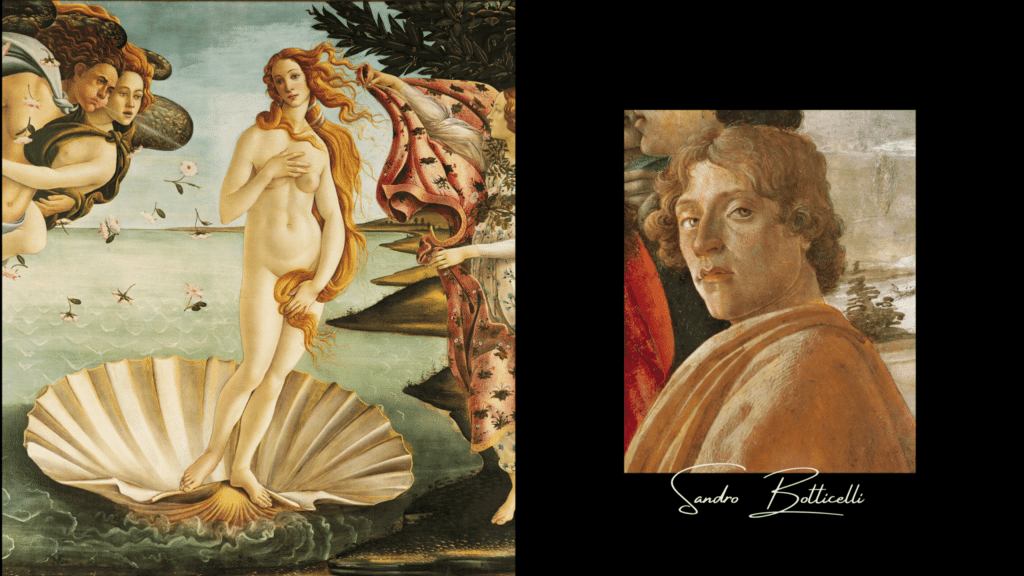
22- Sandro Botticelli (1445–1510)
Sandro Botticelli (1445-1510) was an Italian painter of the Renaissance, celebrated for his delicate and lyrical works that embody the humanistic and poetic spirit of Florence in the 15th century. Influenced by Neoplatonic philosophy, Botticelli’s art is known for its elegance, graceful figures, and subtle use of color and movement. He worked under the patronage of the Medici family, one of Florence’s most powerful dynasties, and his works often reflect the aesthetic and intellectual ideals of his time.
Among his most famous paintings are The Birth of Venus (c. 1485) and Primavera (c. 1482), which embody ideal beauty and spiritual renewal—central themes of the Italian Renaissance. These works are imbued with profound harmony and symbolism, where Botticelli merges pagan mythology with Christian allusions to express philosophical concepts about love, beauty, and virtue.
23- Gustave Courbet (1819-1877)
Gustave Courbet (1819-1877) was a leading French painter of the 19th century, often regarded as a pivotal figure in the Realist movement, which sought to depict everyday reality with unvarnished honesty, rejecting the idealizations of academic and Romantic art. Courbet played a crucial role in shaping modern art by focusing on ordinary subjects and employing innovative painting techniques.
Among his notable works are The Burial at Ornans (1849-1850), a large canvas portraying a funeral in his native village with a stark and realistic approach, and The Sleep (1866), which demonstrates his tendency to tackle controversial and taboo themes. Courbet is distinguished by his direct and unadorned approach, highlighting the lives of the working class and peasants with strong emotional impact and rich texture.


24- Alexandre Cabanel (1823-1889)
Alexandre Cabanel (1823-1889) was a prominent French painter of the 19th century, renowned for his academic style and portraits, characterized by technical refinement and sensuality. Trained at the École des Beaux-Arts in Paris and once a student of François-Édouard Picot’s studio, Cabanel established himself as a master of the academic style, distinguished by his impressive mastery of painting and meticulous attention to detail.
Among his most famous works is The Birth of Venus (1863), which depicts the goddess of love and beauty in a classical and voluptuous pose. This painting marked a high point in his career and is emblematic of his style. Cabanel is also known for his elegant portraits, as well as his representations of mythological and religious figures, and for his contributions to the decoration of Parisian palaces and public institutions.
25- Jean-Léon Gérôme (1824-1904)
Jean-Léon Gérôme (1824-1904) was a French painter and sculptor renowned for his work in the academic and Orientalist styles of the 19th century. He is known for his meticulous paintings and exotic scenes, often inspired by the Orient and ancient cultures. Gérôme studied at the École des Beaux-Arts in Paris and was influenced by the neoclassical masters while developing his own distinctive style.
Among his most famous works are The Slave Market (1866) and The Dance of the Almeh (1873), which capture aspects of everyday life and Oriental spectacles with a fascinating realism and great attention to detail. Gérôme is also noted for his historical representations and scenes of ancient life, such as Gladiators (1872) and Pygmalion and Galatea (1890).


26- Caspar David Friedrich (1774-1840)
Caspar David Friedrich (1774-1840) was a German painter associated with the Romantic movement, renowned for his evocative and introspective landscapes that explore themes of nature, solitude, and spirituality. Friedrich is often regarded as one of the masters of German Romanticism, with his work characterized by a dramatic and sublime representation of nature, aiming to convey deep emotions and personal states of mind.
His most famous works include Wanderer above the Sea of Fog (1818), which depicts a solitary figure contemplating a misty panorama, and The Cross in the Mountains (1808-1810), where a cross stands majestically against a mountainous landscape. These paintings highlight his distinctive use of light, space, and form to create melancholic and contemplative atmospheres.
27- Francisco Goya (1746-1828)
Francisco Goya (1746-1828) was a Spanish painter and printmaker whose work spans a wide range of genres and styles, from Rococo to Romanticism, while showcasing a unique emotional depth and social critique. Often regarded as the last of the old masters and the first of the moderns, Goya’s innovative approach and ability to express powerful, often unsettling visions have significantly influenced the development of contemporary art.
His early works, such as The Naked Maja (c. 1797-1800) and The Clothed Maja (c. 1800), demonstrate his talent for portraiture and genre painting, combining sensuality with realism. However, Goya is best known for his mature works, which reflect a darker and more critical view of society.
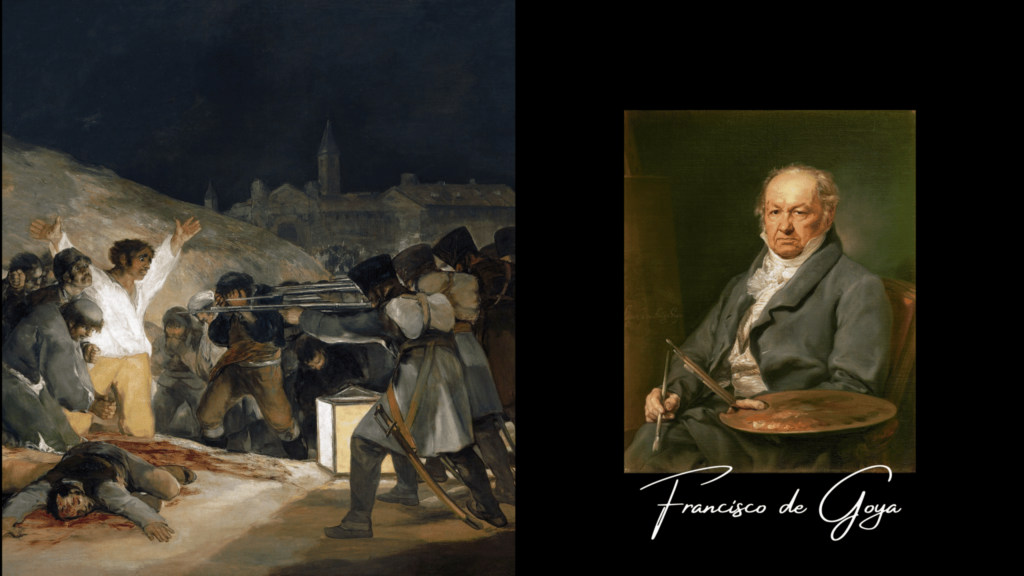

28- Paul Cézanne (1839-1906)
Paul Cézanne (1839-1906) was a French painter widely regarded as a pivotal figure in the development of modern art. Often referred to as the “father of modern art,” Cézanne played a crucial role in bridging the gap between the 19th and 20th centuries, significantly influencing post-impressionist and cubist movements that followed.
Cézanne is renowned for his innovative approach to composition, color, and form. His works, such as The Large Bathers (1898-1905), Mont Sainte-Victoire (1885-1887), and The Garden of the Jas de Bouffan (1885), reflect his interest in the structure and construction of landscapes and still lifes, as well as his experimentation with simplified geometric forms. His distinctive technique involves distinct brushstrokes and layers of color that build forms in a tangible way, while retaining an element of abstraction.
29- Pierre-Auguste Cot (1837-1883)
Pierre-Auguste Cot (1837-1883) was a French painter of the 19th century, celebrated for blending Romanticism with academic style, infused with sensuality and grace. Educated at the École des Beaux-Arts in Paris and influenced by his contemporaries, Cot is particularly known for his genre paintings and elegant portraits.
His most famous work, The Spring (1873), is a delicate depiction of two young lovers set against a natural backdrop, showcasing his mastery of color and texture. This painting exemplifies Cot’s style, which marries Romantic sensibility with meticulous attention to detail and composition.
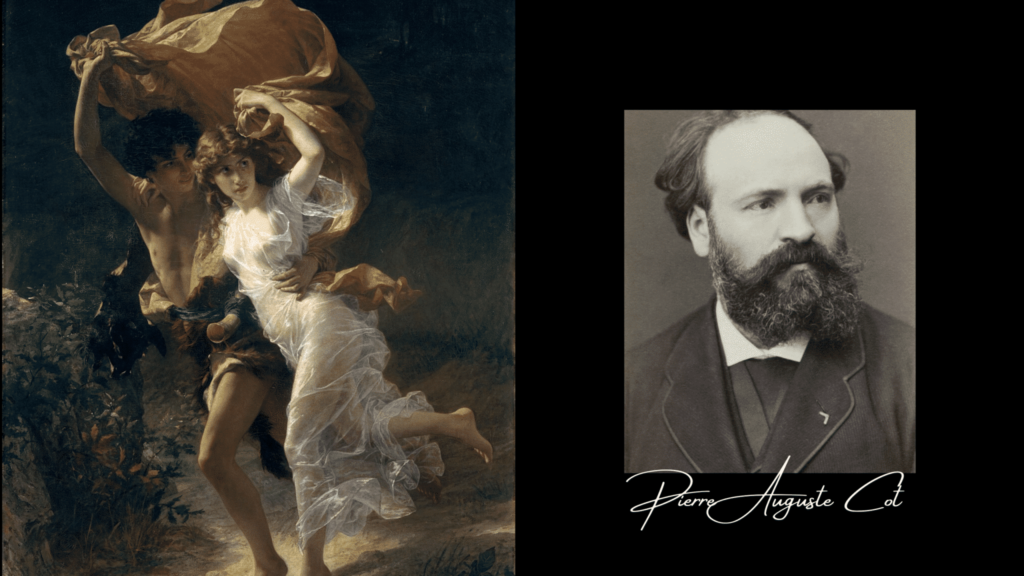
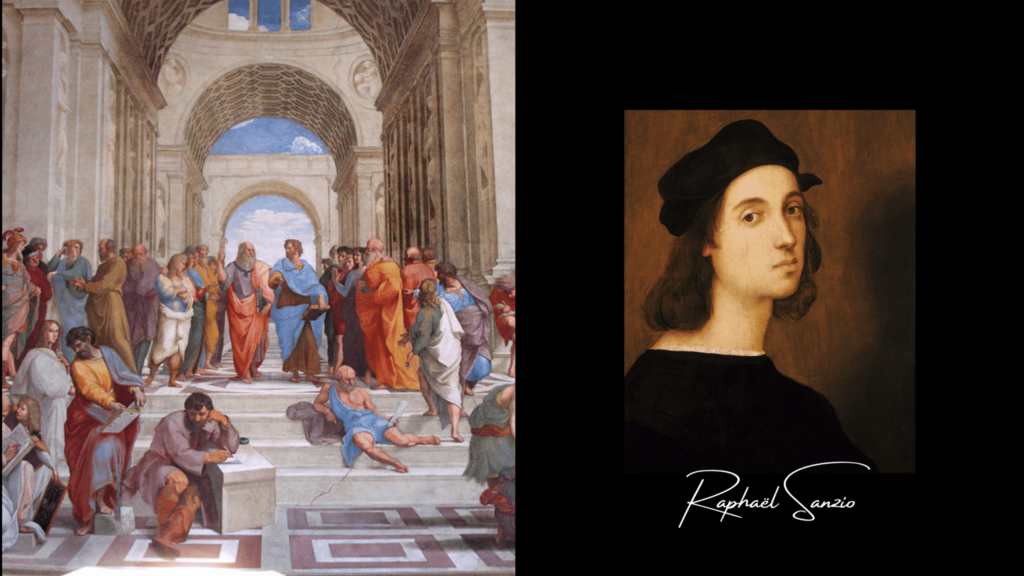
30- Raphael (1483-1520)
Raphael (1483-1520) was an Italian painter and architect of the Renaissance, renowned for his technical mastery and harmonious design. Born in Urbino, Raphael is celebrated as one of the great masters of the Renaissance alongside Leonardo da Vinci and Michelangelo.
His works are characterized by their idealized beauty and balanced composition. Among his most famous creations are the frescoes in the Stanza della Segnatura at the Vatican, with The School of Athens being a highlight. This fresco is acclaimed for its depiction of philosophical figures from antiquity within a complex architectural perspective.
31- Edvard Munch (1863-1944)
Edvard Munch (1863-1944) was a Norwegian painter known for his association with symbolism and expressionism. His style is characterized by a poignant use of color and form to convey deep and often unsettling emotions.
Munch’s most famous work is The Scream (1893), an iconic painting that captures an intense feeling of despair and anguish. This artwork has become a symbol of expressionism, with its dramatic depiction of a figure in torment against a turbulent backdrop.
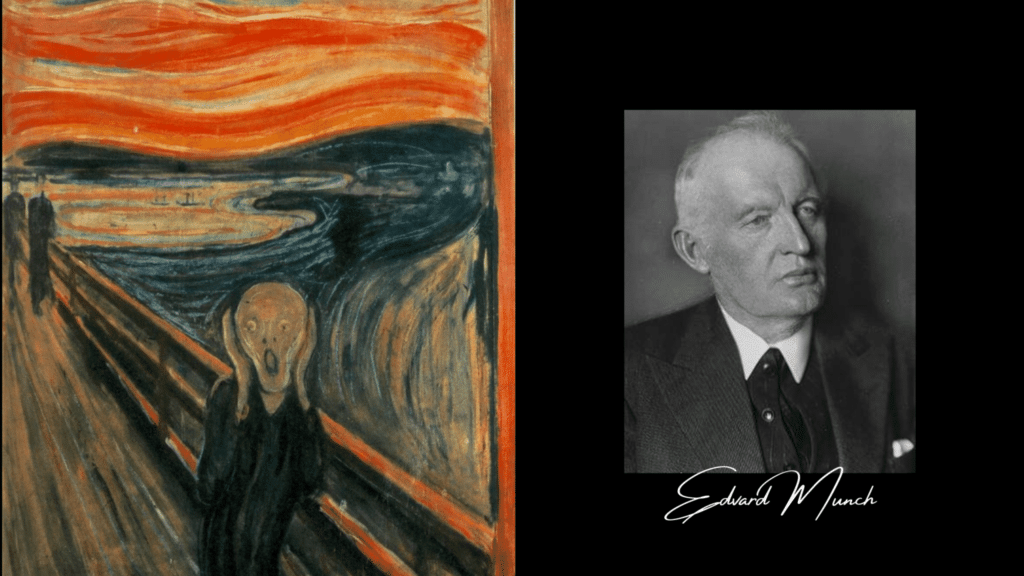

32- Frederic Leighton (1830-1896)
Frederic Leighton (1830-1896) was a British painter and sculptor of the Victorian era, renowned for his works that blend classical elegance with technical finesse. Often associated with the Pre-Raphaelite movement and academic style, Leighton is celebrated for his exceptional precision and refined use of color.
Leighton studied art in London and abroad, including at the Villa Medici in Rome. His works are noted for their remarkable technical skill, sophisticated color palette, and sensitivity to classical beauty.
33- John Singer Sargent (1856–1925)
John Singer Sargent (1856-1925) was an American painter of Italian origin, renowned for his portraits that are both elegant and incisive. Often regarded as one of the most talented portraitists of his time, Sargent’s work stands out for its technical mastery and keen insight into his subjects.
Educated at the École des Beaux-Arts in Paris, Sargent was influenced by both classical techniques and contemporary innovations. His style is characterized by an exceptional ability to render textures and details with precision and sophistication.
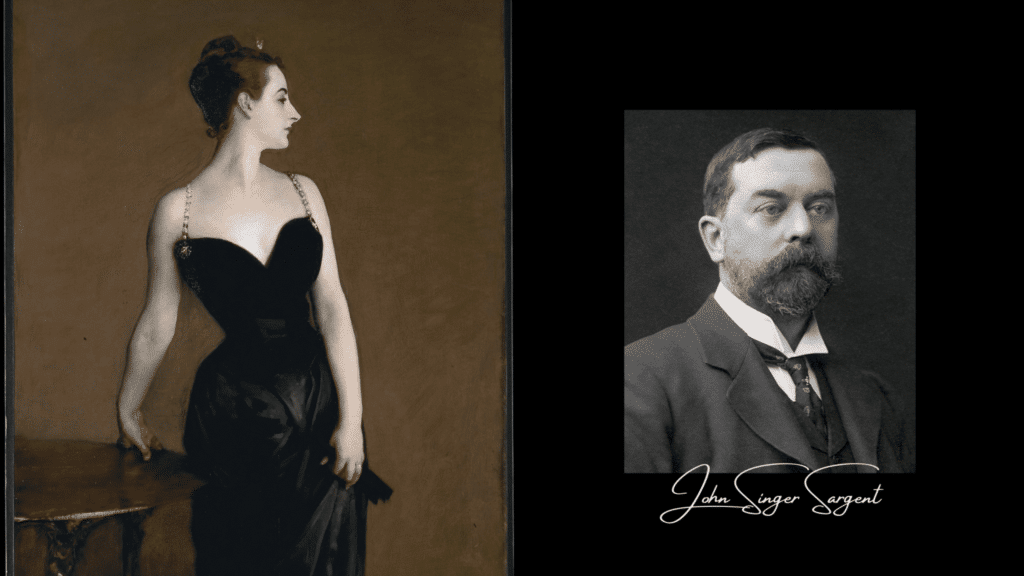
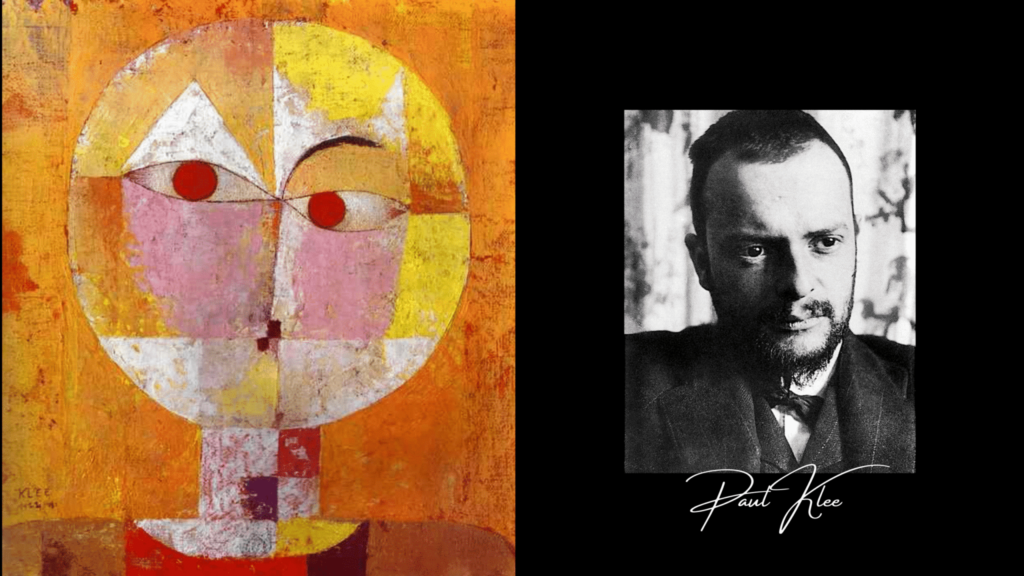
34- Paul Klee (1879-1940)
Paul Klee (1879-1940) was a Swiss painter often associated with Expressionism and modern art. His work is renowned for its playful qualities, inventive use of color, and ability to capture the imaginative and symbolic.
Klee studied at the Academy of Fine Arts in Munich and was influenced by a range of artistic styles and movements, including Fauvism, Surrealism, and Cubism. He was also a member of the Bauhaus school, where he contributed to art education and theory.
35- John William Waterhouse (1849-1917)
John William Waterhouse (1849-1917) was a British painter of the Victorian era, renowned for his romantic and mythological themes and his depictions of feminine figures. He is often associated with the Pre-Raphaelite movement and the artistic style of the late 19th century.
Waterhouse studied at the Royal Academy of Arts in London and was influenced by the Pre-Raphaelites, a group of British artists who advocated for a return to the techniques and subjects of medieval art. He is celebrated for his paintings that combine detailed realism with mythological, literary, and historical themes.

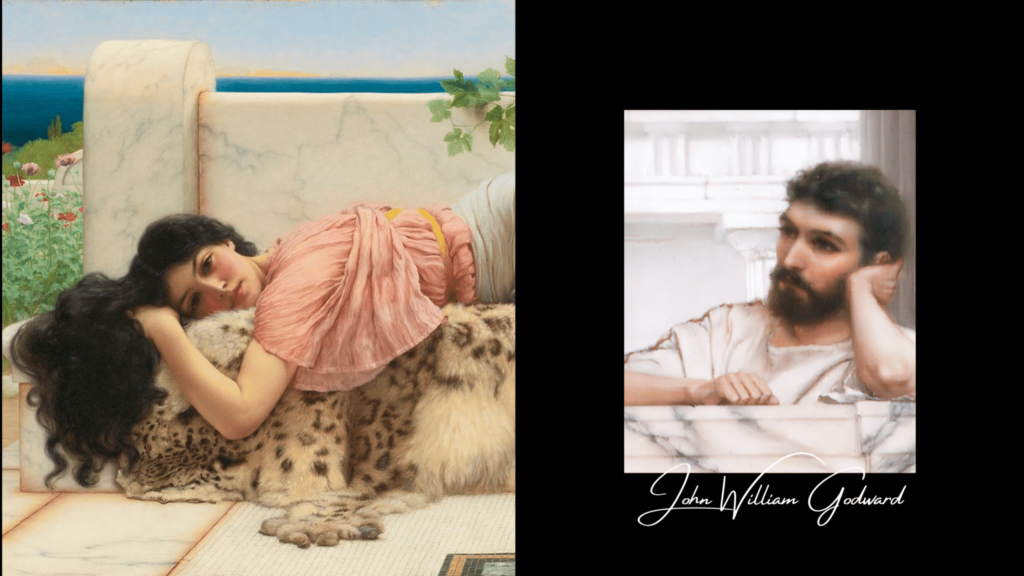
36- John William Godward (1861-1922)
John William Godward (1861-1922) was a British painter associated with the Neo-Classical movement of the late 19th and early 20th centuries. He is best known for his works inspired by themes from ancient Greece and Rome, often depicting elegant and refined feminine figures.
Godward studied at the Royal Academy of Arts in London and was heavily influenced by Pre-Raphaelite artists as well as Renaissance painters. His style is characterized by meticulous attention to detail, a rich and subtle use of color, and an admiration for classical forms and complex draperies.
37- John Collier (1850-1934)
John Collier (1850-1934) was a British painter renowned for his portraits and historical works, often infused with a touch of realism and sophistication. He is also recognized for his portrayals of literary and mythological figures.
Collier studied at the Royal Academy of Arts in London and was influenced by the Pre-Raphaelites, as well as classical art. His style is marked by meticulous attention to detail, subtle use of color, and a talent for capturing complex expressions and emotions.


38- Jean-François Millet (1814-1875)
Jean-François Millet (1814-1875) was a French painter renowned for his depictions of rural life and peasants. He is often associated with the Realist movement, which aimed to represent everyday life with honesty and accuracy, moving away from Romantic or Classical idealizations.
Born in Normandy, a region that deeply influenced his work, Millet’s paintings capture the harsh reality of agricultural and laboring life with great empathy. Among his most famous works are The Gleaners (1857), which depicts women collecting leftover grain after the harvest, and The Angelus (1857-1859), showing peasants praying at sunset.
39- Léon Bonnat (1833-1922)
Léon Bonnat (1833-1922) was a French painter and teacher, renowned for his portraits, historical scenes, and depictions of everyday life. He played a significant role in the development of academic art in the 19th century and is associated with the Realist style.
Bonnat studied at the École des Beaux-Arts in Paris and won the Prix de Rome in 1867, which allowed him to stay at the Villa Medici in Rome. His works are characterized by masterful technique, meticulous attention to detail, and a faithful representation of subjects.
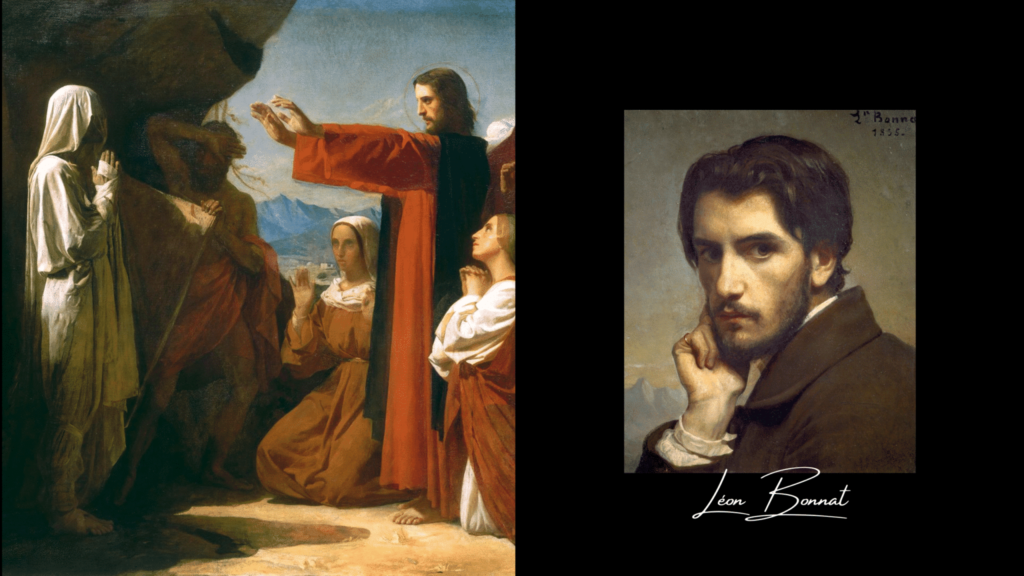
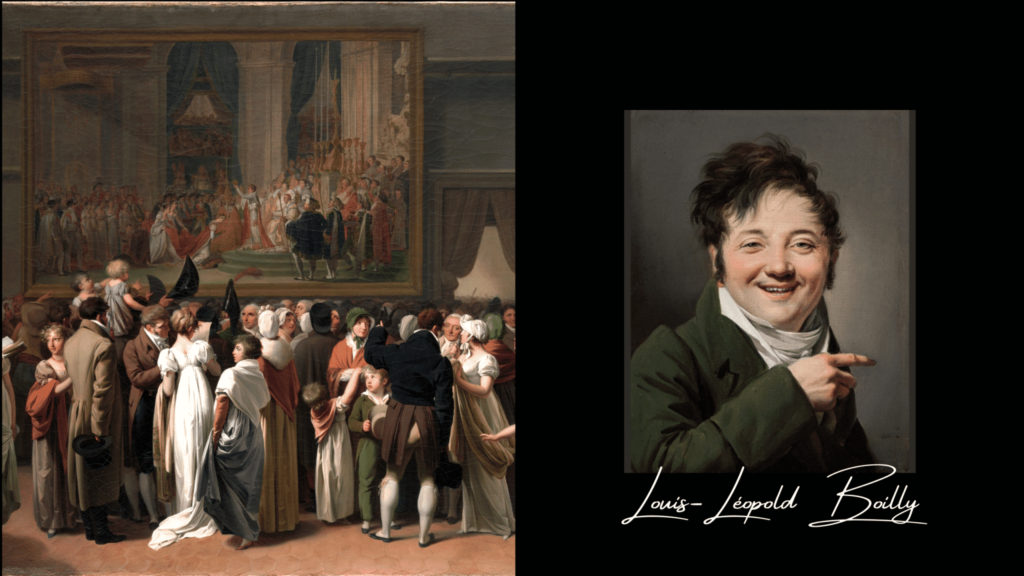
40- Louis-Léopold Boilly (1761-1845)
Louis-Léopold Boilly (1761-1845) was a French painter and draftsman renowned for his genre scenes, portraits, and depictions of daily life during the late 18th and early 19th centuries. He is often associated with the period of the French Revolution and the Consulate.
Boilly began his career as a genre painter, creating works that capture moments of everyday life with acute observational skills. His paintings are characterized by meticulous attention to detail and a vivid representation of behaviors and fashions of the time.
41- Paul Delaroche (1797-1856)
Paul Delaroche (1797-1856) was a French painter of the 19th century known for his historical works and dramatic representations. He is often associated with the academic style and Orientalism, blending realism with theatricality in his approach.
Delaroche studied at the École des Beaux-Arts in Paris and was influenced by the Old Masters as well as neoclassical and romantic movements. His work is marked by meticulous attention to historical detail and an effective use of light and color to create visually striking scenes.


42- Diego Velázquez (1599-1660)
Diego Velázquez (1599-1660) was a Spanish painter of the 17th century, renowned as one of the greatest masters of Baroque art. His work is celebrated for its technical virtuosity, innovative use of light and perspective, and its profound exploration of the human condition.
Born in Seville, Velázquez studied under Francisco Pacheco before becoming the official court painter for King Philip IV of Spain. His years at court significantly influenced his style and subjects.
43- Camille Pissarro (1830-1903)
Camille Pissarro (1830-1903) was a Franco-Danish painter and one of the founders and key figures of the Impressionist movement. His significant contributions to the development of Impressionism and his influence on other artists in the movement are highly regarded.
Born in Saint Thomas in the Caribbean, Pissarro studied in Paris, where he was influenced by the techniques of Impressionist masters such as Claude Monet and Pierre-Auguste Renoir. He is well-known for his landscapes and rural scenes, which capture light and atmosphere with innovative use of color and brushstroke.


44- Emanuel Leutze (1816-1868)
Emanuel Leutze (1816-1868) was a German-American painter known primarily for his historical works and grandiose paintings depicting significant moments in American history. He is often associated with Romanticism and historical realism.
Born in Germany, Leutze emigrated to the United States with his family at the age of nine. He studied at the Düsseldorf Academy of Fine Arts in Germany before returning to America, where he became an influential painter.
45- Henri Rousseau (1844-1910)
Henri Rousseau (1844-1910), often known as “Le Douanier Rousseau” due to his career as a customs officer before fully dedicating himself to painting, was a French artist recognized as a pioneer of the naive art movement. His painting is distinguished by its unique style, lush compositions, and dreamlike representations.
Rousseau was a self-taught artist who began painting seriously in adulthood, often alongside his work at the customs office. His style is marked by a naive approach and an apparent simplicity, but he is also known for his imaginative qualities and meticulous details.


46- Georges Seurat (1859-1891)
Georges Seurat (1859-1891) was a French painter renowned for being one of the founders of Pointillism, an innovative technique that uses separate dots of color to create complex visual effects. Seurat is a key figure in the Post-Impressionist movement and is often associated with scientific and optical research in painting.
Seurat studied at the École des Beaux-Arts in Paris and was influenced by colorists like Eugène Delacroix and scientific theories about color perception. His methodical and scientific approach to painting aimed to apply principles of color science to enhance the visual impact of his works.
47- Gustave Caillebotte (1848-1894)
Gustave Caillebotte (1848-1894) was a French painter associated with the Impressionist movement, known for his realistic depictions of modern urban life and his innovative use of perspective and light.
Born into a wealthy family, Caillebotte had the financial means to devote himself to painting while also supporting other Impressionist artists. He studied at the École des Beaux-Arts in Paris and, although influenced by Impressionist techniques, developed a distinctive style of his own.
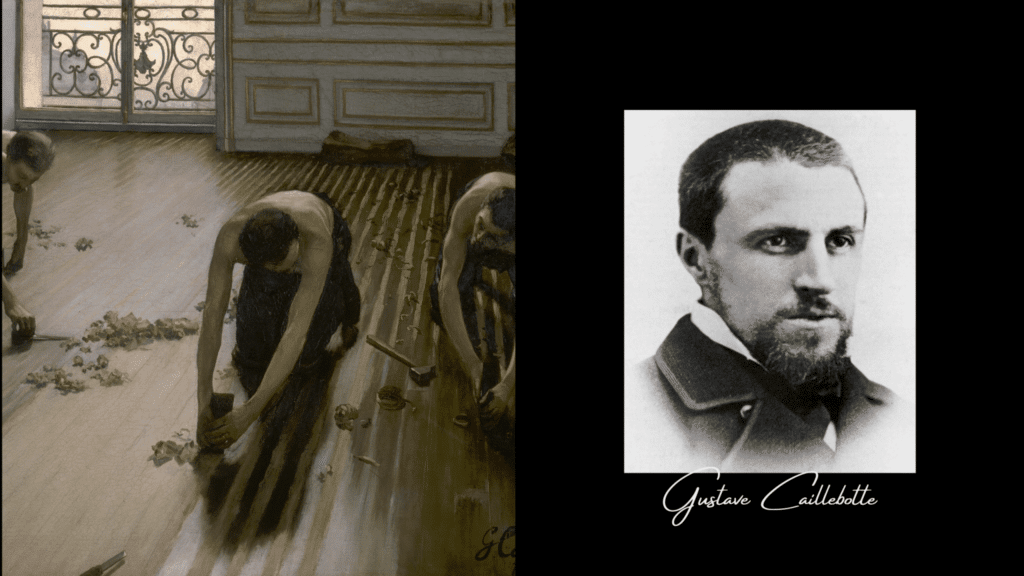

48- Frédéric Bazille (1841-1870)
Frédéric Bazille (1841-1870) was a French painter associated with the Impressionist movement. Although his career was tragically cut short by his premature death at the age of 28, his work had a significant influence on the development of Impressionism.
Born in Montpellier, Bazille studied at the École des Beaux-Arts in Paris, where he was influenced by painters like Jean-François Millet and Gustave Courbet. He quickly formed connections with Impressionist artists such as Claude Monet, Pierre-Auguste Renoir, and Alfred Sisley.
49- Franz Marc (1880-1916)
Franz Marc (1880-1916) was a German painter and one of the founding members of the Expressionist movement, particularly known for his role in the group Der Blaue Reiter (The Blue Rider). Marc is renowned for his works that use vivid colors and abstract forms to convey emotions and spiritual aspects of nature.
Marc studied at the Academy of Fine Arts in Munich and was influenced by Fauvism and Post-Impressionism. His work is characterized by bold color usage and stylized representations of animals and landscapes. He believed that animals were symbols of purity and spirituality, often using their imagery to explore broader themes related to nature and humanity.
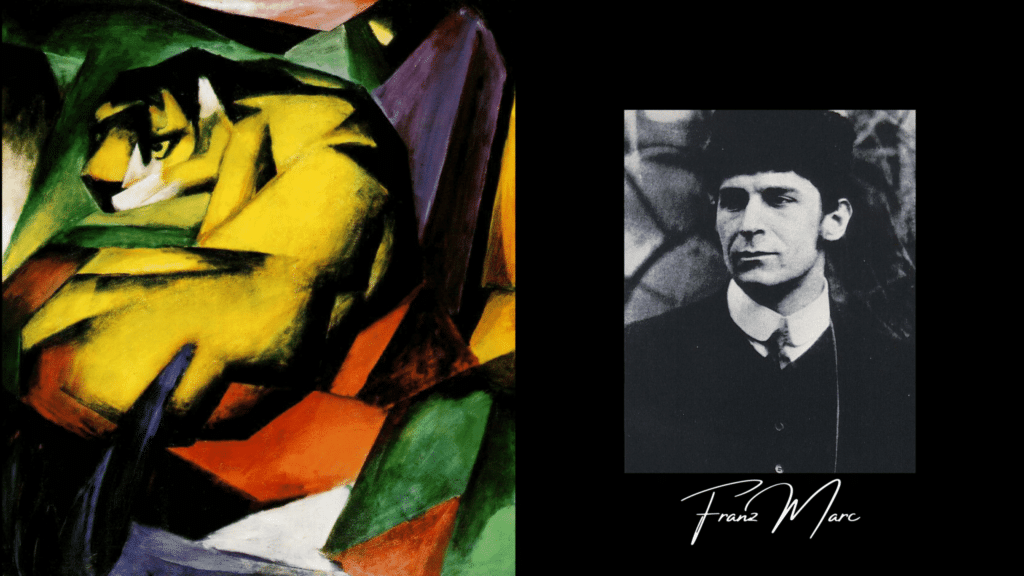

50- Joaquín Sorolla (1863-1923)
Joaquín Sorolla (1863-1923) was a Spanish painter renowned for his luminous and vibrant works that capture the sunlight and warmth of the Mediterranean. His style is often associated with realism and luminism, characterized by his meticulous attention to color and light.
Born in Valencia, Spain, Sorolla studied at the Academy of Fine Arts of Madrid. Influenced by the Impressionist movement, he developed a distinctive style noted for its expert use of light and bright colors.
51- Albrecht Dürer (1471-1528)
Albrecht Dürer (1471-1528) was a German painter, printmaker, and art theorist of the Renaissance, widely recognized for his exceptional work in graphic arts and his influence on the development of art in Europe.
Born in Nuremberg, Dürer is best known for his woodcuts and engravings, which revolutionized printmaking techniques and allowed for a broader dissemination of art. His works are characterized by great technical precision, meticulous attention to detail, and a capacity to capture complex symbolic and psychological aspects.

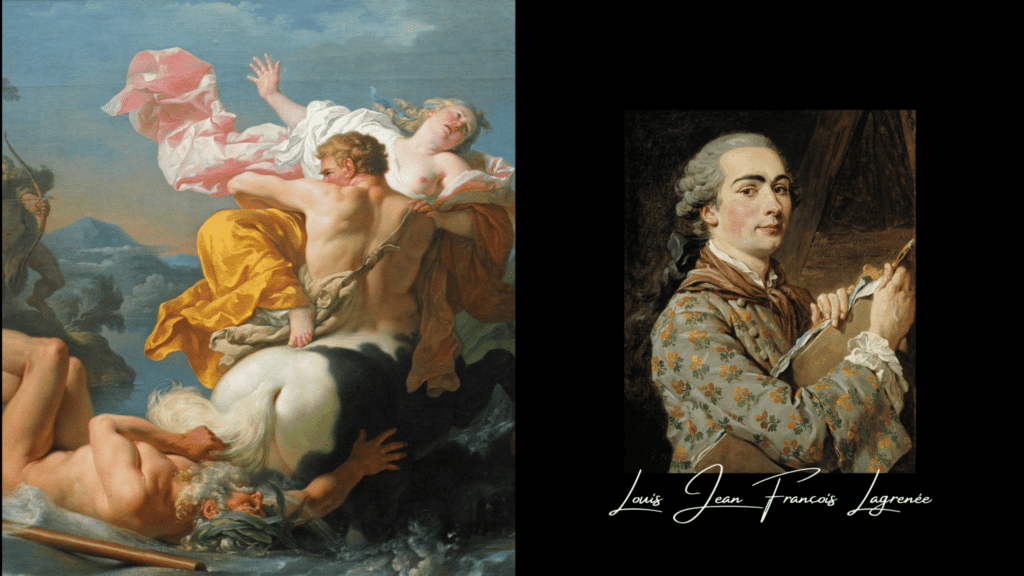
52- Louis Jean François Lagrenée (1724-1805)
Louis Jean François Lagrenée (1724-1805) was an 18th-century French painter known for his Rococo style and his contributions to portraiture and historical scenes. He is often associated with the Royal Academy of Painting and Sculpture, where he played a significant role in the development of French art during this period.
Born in Paris, Lagrenée studied at the Royal Academy, where he was trained by influential artists such as François Boucher. His work is characterized by an elegant use of color, refined compositions, and a detailed approach typical of the Rococo style.
53- Thomas Cole (1801-1848)
Thomas Cole (1801-1848) was an American painter considered the founder of the Hudson River School movement, which played a pivotal role in the development of American landscape painting in the 19th century. His work is recognized for its representation of natural grandeur and its commitment to themes of nature and conservation.
Born in England, Cole emigrated to the United States with his family in 1818. He settled in New York and was deeply influenced by the American landscapes he encountered, particularly those in the Catskills and the Hudson Valley. His style is marked by meticulous attention to natural details and a profound ability to capture the majesty of American landscapes.

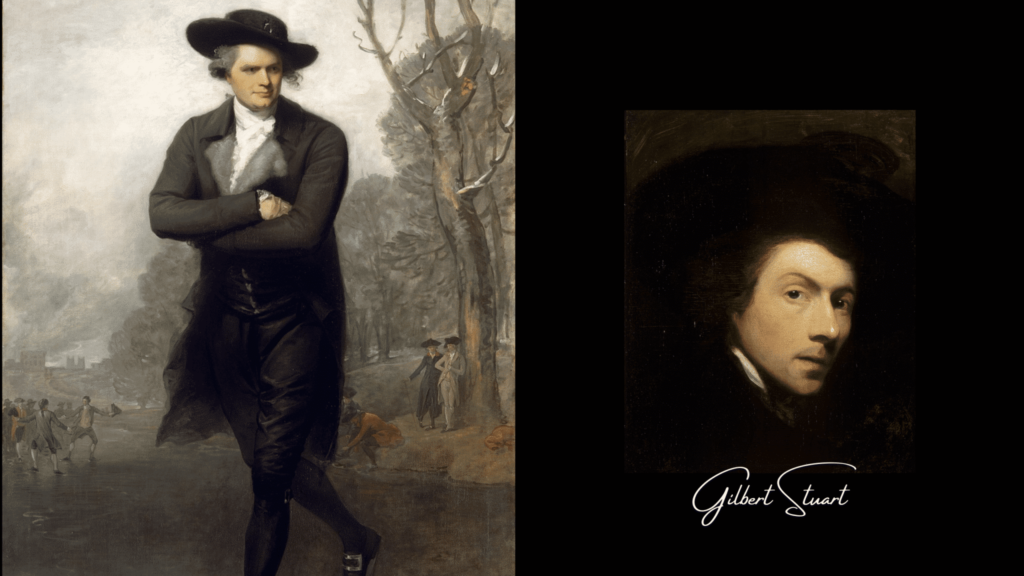
54- Gilbert Stuart (1755-1828)
Gilbert Stuart (1755-1828) was an American painter renowned for his portraits, particularly of significant political figures of his time. He is considered one of the foremost portraitists in American history, and his work is often associated with the Neoclassical style.
Born in Newport, Rhode Island, Stuart studied painting in Boston before traveling to Europe to refine his craft. In Britain, he studied under prominent painters such as Benjamin West and was influenced by the prevailing Neoclassical style.
55- Alphonse Mucha (1860-1939)
Alphonse Mucha (1860-1939) was a Czech artist renowned for his iconic contributions to the Art Nouveau movement. He is best known for his decorative posters, often featuring floral motifs and stylized female figures. His style is characterized by flowing, sinuous lines, elegant compositions, and meticulous attention to detail.
Born in Ivancice, Czech Republic, Mucha studied at the Academy of Fine Arts in Prague before moving to Paris, where he gained significant acclaim. His collaboration with influential artists and creators of the time had a profound impact on graphic design and advertising.
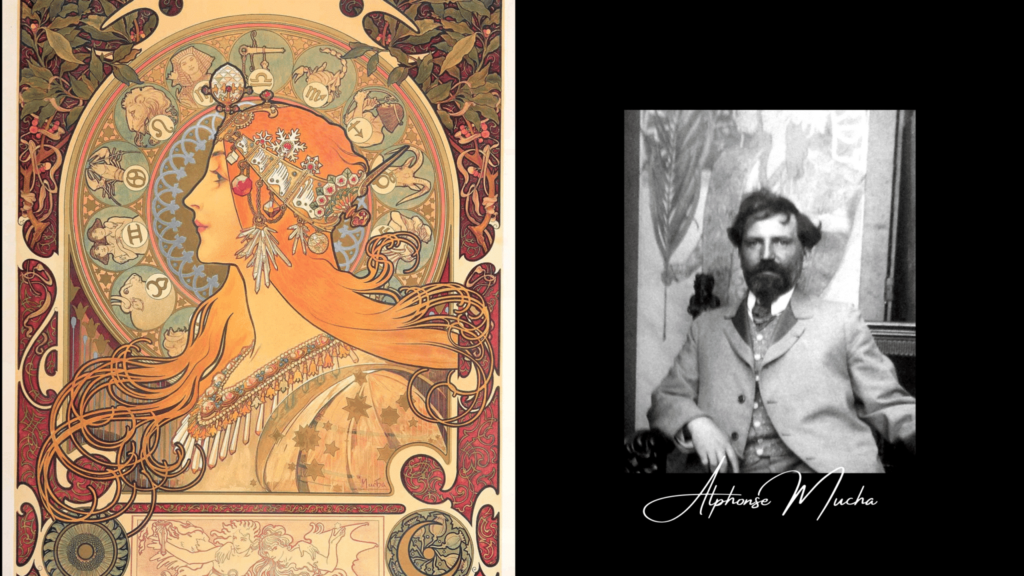
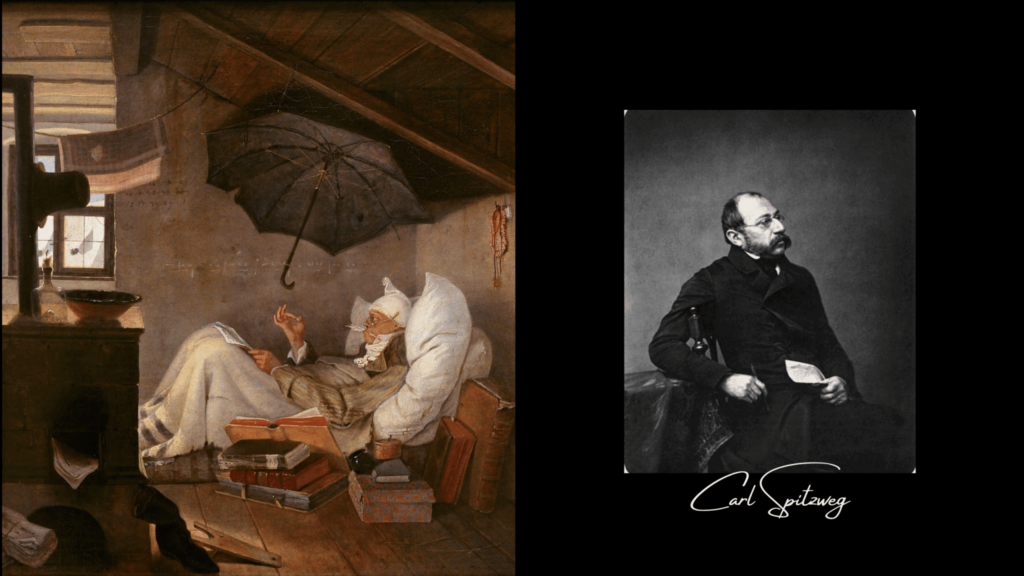
56- Carl Spitzweg (1808–1885)
Carl Spitzweg (1808–1885) was a German painter associated with the Romantic movement. Born in Munich, he is best known for his charming and humorous depictions of everyday life, often featuring eccentric characters in picturesque settings.
Spitzweg initially worked as a pharmacist but pursued his passion for art full-time. He studied at the Academy of Fine Arts in Munich and was influenced by German Romanticism, which emphasizes emotional expression and the representation of nature.
57- Lawrence Alma-Tadema (1836–1912)
Lawrence Alma-Tadema (1836–1912) was a Dutch-born British painter renowned for his Victorian-era works depicting life in ancient Greece and Rome with remarkable precision and detail. Often associated with the Pre-Raphaelite movement and Victorian academic style, Alma-Tadema is celebrated for his meticulous historical accuracy and realistic rendering of textures, materials, and decorations from antiquity.
He studied at the Royal Academy of Fine Arts in Brussels before moving to London in 1870, where he achieved considerable success. Alma-Tadema’s works are distinguished by their elaborate compositions and rich color palettes, capturing the grandeur of ancient Rome with a focus on elegant figures and opulent settings.

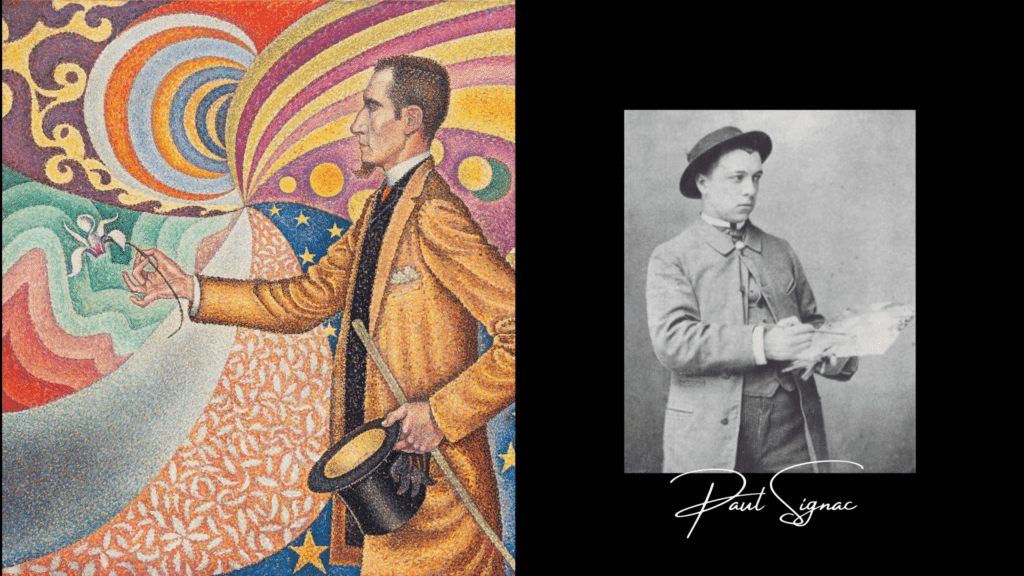
58- Paul Signac (1863–1935)
Paul Signac (1863–1935) was a French painter and a leading figure in the Neo-Impressionist movement, also known as Pointillism. Born in Paris, Signac studied art at the École des Beaux-Arts, where he was influenced by Georges Seurat, the founder of Pointillism.
Pointillism is a painting technique in which small dots or strokes of pure color are applied to the canvas, allowing the colors to blend optically rather than physically. This method aims to create a distinctive luminosity and vibrancy in the artwork.
59- Grant Wood (1891–1942)
Grant Wood (1891–1942) was an American painter best known for his iconic work “American Gothic.” Born in Anamosa, Iowa, Wood’s upbringing in a rural environment deeply influenced his art, which often reflects themes of Midwestern life.
Wood studied at the Art Institute of Chicago and was influenced by various European artistic movements, including Neo-Classicism and Regionalism, a style emphasizing rural American life. His work was also shaped by medieval Gothic traditions and Flemish painting.
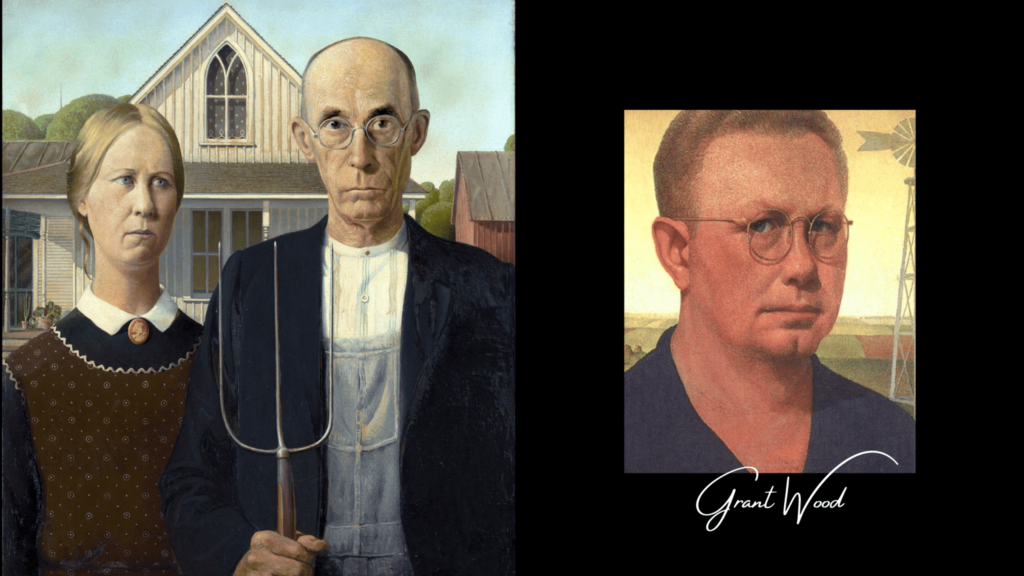

60- Jules-Cyrille Cavé (1820–1913)
Jules-Cyrille Cavé (1820–1913) was a French painter and sculptor associated with the Symbolist movement and the Parisian art scene. Although less renowned than some of his contemporaries, Cavé made a notable contribution to the art world.
Cavé studied at the École des Beaux-Arts in Paris, where he was influenced by the prevailing artistic movements of his time, including Symbolism and Post-Impressionism. His work is distinguished by its poetic and melancholic qualities, often exploring mythological and mystical themes.
61- Andersen Brendekilde (1857–1942)
Andersen Brendekilde (1857–1942) was a Danish painter known for his works influenced by Naturalism and Social Realism. Born in Skamling, Denmark, Brendekilde studied at the Royal Danish Academy of Fine Arts in Copenhagen and was influenced by the artistic currents of his time, including Realism and Naturalism.
His work is characterized by poignant and realistic depictions of the living conditions of the working class and rural communities. Brendekilde often painted scenes from the daily lives of peasants, workers, and children, highlighting the often-overlooked aspects of Danish society. His paintings are renowned for their empathy, sensitivity, and social commitment.
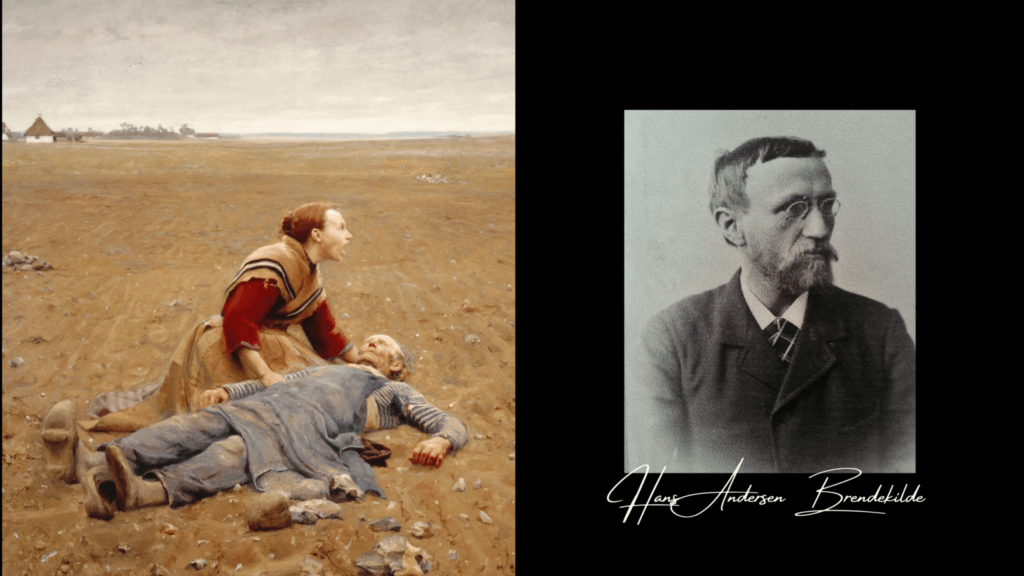
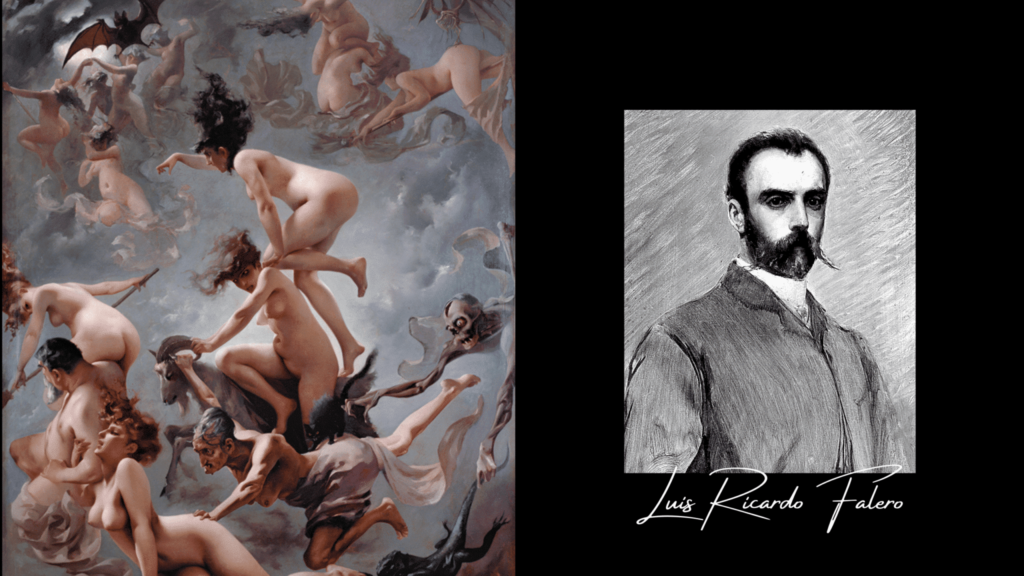
62 – Luis Ricardo Falero (1851–1896)
Luis Ricardo Falero (1851–1896) was a Spanish painter known for his works in the Symbolist and Pre-Raphaelite styles. Born in Granada, Falero is best recognized for his paintings of nymphs, goddesses, and mythological figures, often imbued with a sensual touch and a rich, vibrant palette.
He studied at the Royal Academy of Fine Arts of San Fernando in Madrid and was influenced by the European artistic movements of his time, including Symbolism and Orientalism. Falero was also associated with avant-garde artist groups, and his works are marked by a strong decorative component and an interest in mystical and mythological themes.
63- Francesco Hayez (1791–1882)
Francesco Hayez (1791–1882) was an Italian painter and a central figure in Italian Romanticism. Born in Venice, Hayez is best known for his historical paintings and portraits, which made a significant impact on 19th-century Italian art.
He studied at the Academy of Fine Arts of Venice before moving to Milan, where he played a major role in the development of Romantic art in Italy. His works are characterized by their emotional intensity, dramatic composition, and remarkable technical skill.

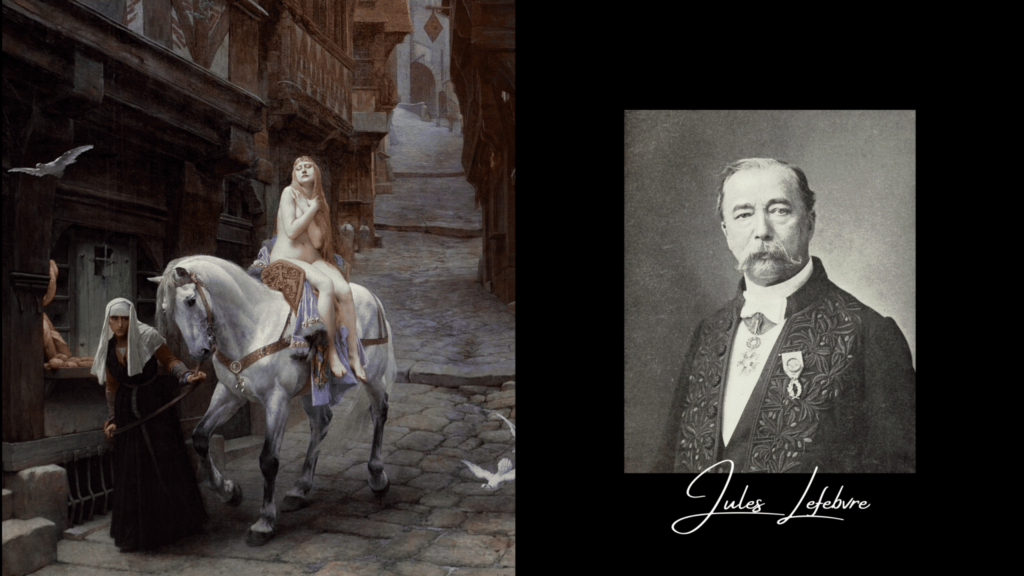
64- Jules Lefebvre (1836–1911)
Jules Lefebvre (1836–1911) was a French painter associated with the academic movement and realism of the late 19th century. Born in Tournan-en-Brie, Lefebvre studied at the École des Beaux-Arts in Paris, where he was trained by prominent masters such as Léon Bonnat and Alexandre Cabanel.
Lefebvre is renowned for his portraits, still lifes, and genre scenes, often executed with meticulous attention to detail and a refined sense of color. His work is marked by a classical academic style, with a particular focus on technique and the realistic representation of subjects.
64- Jules Lefebvre (1836–1911)
Jules Lefebvre (1836–1911) was a French painter associated with the academic movement and realism of the late 19th century. Born in Tournan-en-Brie, Lefebvre studied at the École des Beaux-Arts in Paris, where he was trained by prominent masters such as Léon Bonnat and Alexandre Cabanel.
Lefebvre is renowned for his portraits, still lifes, and genre scenes, often executed with meticulous attention to detail and a refined sense of color. His work is marked by a classical academic style, with a particular focus on technique and the realistic representation of subjects.

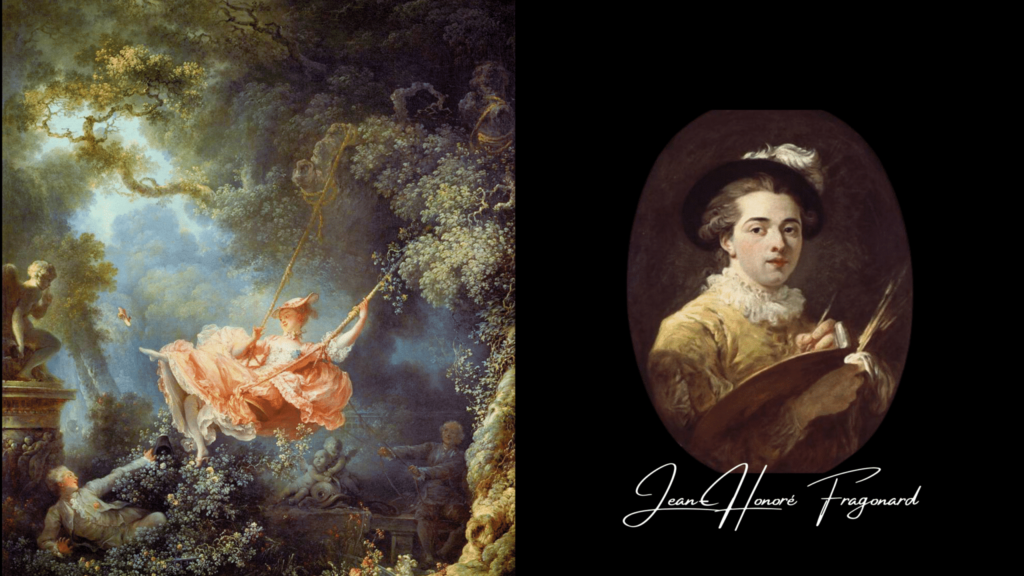
65- Jean-Honoré Fragonard (1732–1806)
Jean-Honoré Fragonard (1732–1806) was a French painter and draftsman of the 18th century, renowned for his works imbued with lightness and sensuality. He is often associated with the Rococo style, characterized by its fluid compositions, vibrant colors, and themes frequently linked to frivolity and pleasure.
Fragonard studied at the Académie royale de peinture et de sculpture in Paris, where he was influenced by artists such as François Boucher and Nicolas Lancret. He gained considerable fame for his gallant scenes, portraits, and landscapes. His works are known for their elegance, refinement, and ability to capture the spirit of the times.
66- Edmund Leighton (1852–1922)
Edmund Leighton (1853–1922) was a British painter known for his Pre-Raphaelite and Neo-Medieval style, capturing the romantic and legendary atmosphere of the Middle Ages. His career was marked by detailed and elegant representations of medieval times, often inspired by Arthurian or chivalric themes.
Leighton studied at the Royal Academy Schools and was influenced by the Pre-Raphaelites, particularly their emphasis on historical detail and costume accuracy. His works are characterized by their decorative richness, refined compositions, and meticulous attention to historical detail.
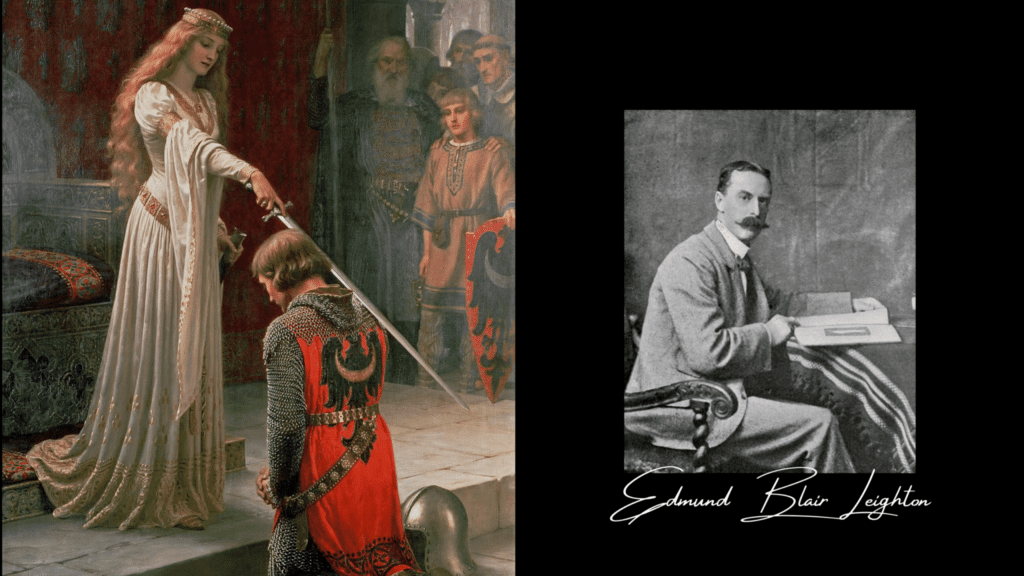

67- Giuseppe Arcimboldo (1527–1593)
Giuseppe Arcimboldo (1526–1593) was an Italian Renaissance painter renowned for his unique and original portraits that combine natural elements to create faces. Born in Milan, he is best known for his fantastical compositions where fruits, vegetables, flowers, and various objects are assembled to form human portraits.
Arcimboldo primarily worked at the Habsburg court in Vienna and Prague, where his inventive and technically skilled works captivated audiences. His portraits, often imbued with a surreal quality (though this term was not used during his time), are intricate visual puzzles that invite viewers to explore multiple layers of meaning and interpretation.
68- Bartolomé Esteban Murillo (1618-1682)
Bartolomé Esteban Murillo (1617-1682) was a Spanish Baroque painter renowned for his religious works and genre scenes. Born in Seville, he is one of the great masters of 17th-century Spanish painting and is celebrated for his gentle and humane style within the Baroque tradition.
Murillo is particularly noted for his depictions of religious figures, especially the Virgin Mary, whom he often portrayed with great tenderness and emotional expressiveness. His works are characterized by a subtle use of light and a warm color palette, creating an atmosphere of softness and devotion.
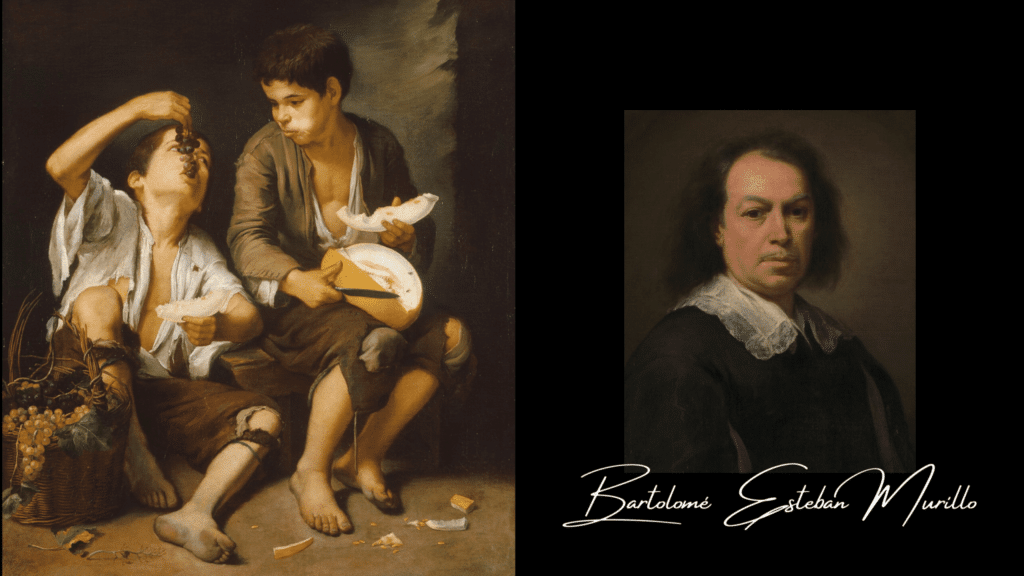

69- John Everett Millais (1829-1896)
John Everett Millais (1829-1896) was a British painter and one of the founding members of the Pre-Raphaelite Brotherhood, a movement aimed at returning to a more detailed and authentic style of painting inspired by the masters before Raphael.
Born in Southampton, Millais studied at the Royal Academy Schools and was influenced by artists such as Dante Gabriel Rossetti and William Holman Hunt, with whom he formed the Pre-Raphaelite Brotherhood. The movement advocated for great fidelity to nature and the use of medieval techniques in modern painting.
70- Guido Reni (1575-1642)
Guido Reni (1575-1642) was an Italian Baroque painter born in Bologna, renowned for his religious and mythological works as well as his elegant and refined style. Often associated with the Bolognese School, Reni is known for his balanced compositions, idealized figures, and masterful use of light and color.
Reni trained at the Carracci Academy, founded by Annibale Carracci, and was heavily influenced by the classical style and formal harmony of the Carracci. However, he developed a personal style that combined this classical rigor with a more dramatic and emotional Baroque sensitivity.

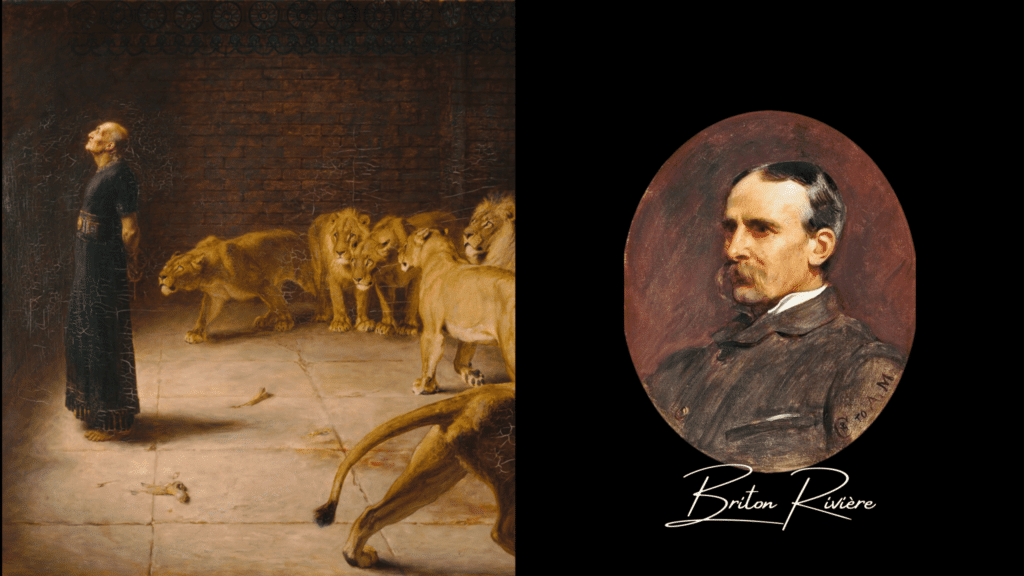
71- Briton Rivière (1840-1920)
Briton Rivière (1840-1920) was a renowned British painter known for his animal paintings and genre scenes. Born in London, Rivière is particularly celebrated for his realistic and emotive depictions of animals in their natural environments.
Rivière studied at the Royal Academy Schools and was influenced by the genre painting style and the tradition of animal painting, notably through artists like Edwin Landseer. His works are characterized by meticulous attention to detail, refined technique, and his ability to capture the personality and emotions of animals.
72- Adolph von Menzel (1815-1905)
Adolph von Menzel (1815-1905) was a German painter and graphic artist renowned for his exceptional realism and his ability to capture scenes of everyday life with extraordinary detail. His work is distinguished by its technical precision, rich details, and dynamic compositions.
Menzel is best known for his representations of urban life and historical events of his time. He produced a wide range of works, including genre scenes, portraits, landscapes, and historical depictions. His artistic approach is characterized by meticulous attention to detail and innovative use of light and shadow.
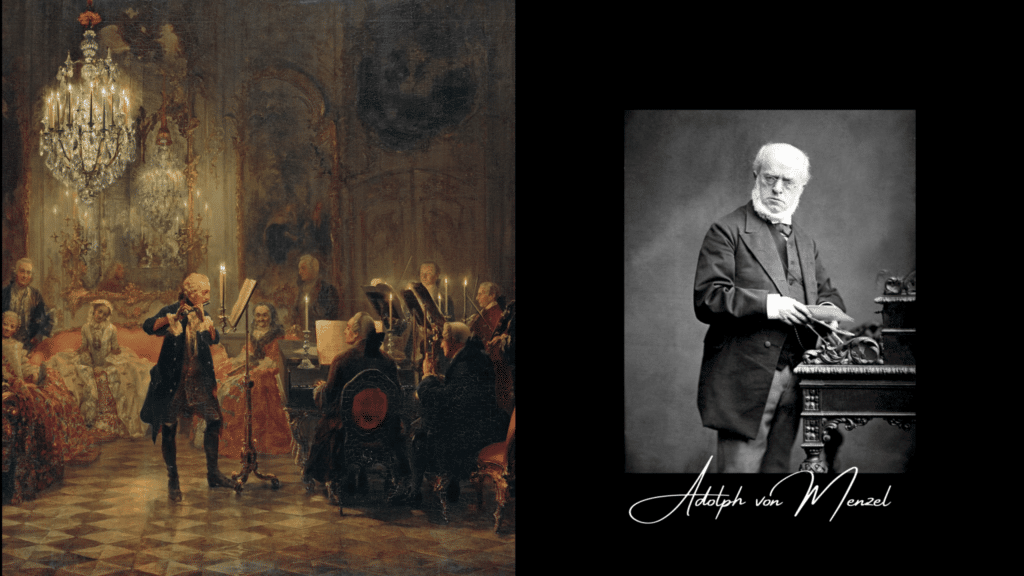

73- Herbert Draper (1863-1920)
Herbert Draper (1863-1920) was a British painter whose work is often linked to the Neoclassical movement and Art Nouveau. He is renowned for his epic compositions and depictions of mythological and historical subjects, frequently infused with a touch of sensuality and drama.
Draper’s works are characterized by vibrant color use, elegant forms, and elaborate details, reflecting both his admiration for ancient masters and his engagement with the artistic styles of his time. His paintings often feature graceful female figures and idealized landscapes.
74- Paul Gauguin (1848-1903)
Paul Gauguin (1848-1903) was a French Post-Impressionist painter renowned for his bold use of color and his pursuit of a more symbolic and emotional artistic expression. He is particularly known for the works created during his time in Polynesia, where he sought to capture the essence of a primitive and idealized way of life.
Gauguin played a key role in the development of Symbolism and was an influential figure in the Nabi movement, a group of artists who explored art as a spiritual and emotional expression rather than merely a visual representation.


75- Mary Cassatt (1844 – 1926)
Mary Cassatt (1844-1926) was an American painter associated with the French Impressionist movement. Known for her intimate portrayals of domestic life, particularly women and children, Cassatt played a crucial role in introducing and popularizing Impressionism in the United States.
Trained at the École des Beaux-Arts in Paris, she was one of the few women to become a member of the Impressionist circle. Her work is characterized by a subtle use of color, innovative compositions, and a keen focus on family interactions and everyday moments.
76- Lionel Royer (1852-1926)
Lionel Royer (1852-1926) was a French painter known for his works influenced by Academic style and Realism. His work is often distinguished by meticulous attention to historical details and precise technique.
Royer is best recognized for his paintings depicting historical scenes and costumed figures, frequently inspired by events or figures from French history. He also painted portraits and landscapes, employing a rich palette and careful lighting to create evocative atmospheres.
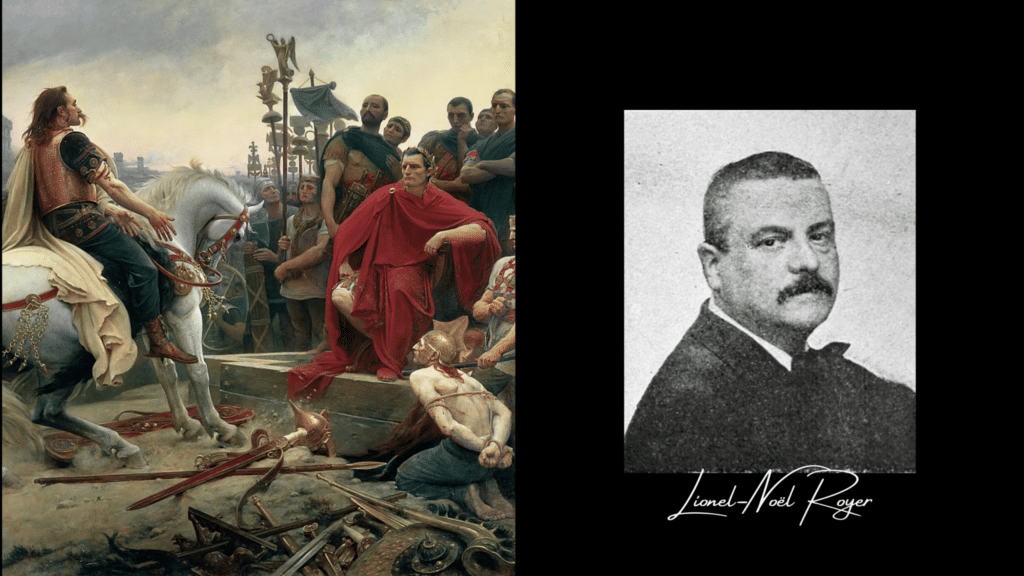

77 – Vicente Juan Masip (1507 – 1579)
Vicente Juan Masip, better known as “Vicente Masip” or “Vicente Macip,” was a Spanish Renaissance painter born in Valencia around 1480 and died in Valencia in 1545. He is considered one of the pioneers of the Renaissance style in Spain.
Masip trained in his father’s workshop and developed a style influenced by Italian Renaissance masters, while also incorporating local and Gothic elements. His works are characterized by meticulous attention to detail, subtle use of color, and balanced composition.
78 – August Macke (1887-1914)
August Macke (1887-1914) was a German painter and one of the most influential members of the Expressionist movement, particularly within the “Blue Rider” (Der Blaue Reiter) group, led by Wassily Kandinsky and Franz Marc.
Macke is known for his bold use of color, vibrant compositions, and innovative style that blends elements of Fauvism, Cubism, and Expressionism. His work is often characterized by a pursuit of emotional expression through simplified forms and intense colors.


79 – James Abbott McNeill Whistler (1834-1903)
James Abbott McNeill Whistler (1834-1903) was an American painter and printmaker renowned for his innovative approach to painting and his central role in the development of the “Aesthetic Movement.” Whistler is especially known for his distinctive style, which significantly influenced the evolution of modern art.
Whistler built his reputation with works that emphasize color harmony and composition rather than realistic representation. He often used evocative titles for his works, such as “Arrangement in Grey and Black,” reflecting his focus on visual balance and aesthetic expression.
80 – Max Liebermann (1847-1935)
Max Liebermann (1847-1935) was a German painter associated with the Impressionist movement. He is known for his vibrant depictions of everyday scenes, landscapes, and portraits, often rendered with brilliant light and vivid colors.
Liebermann was influenced by French Impressionists, including Édouard Manet and Claude Monet, and played a key role in introducing and popularizing Impressionism in Germany. His style is marked by a fluid approach to plein air painting, capturing ephemeral moments of light and atmosphere.
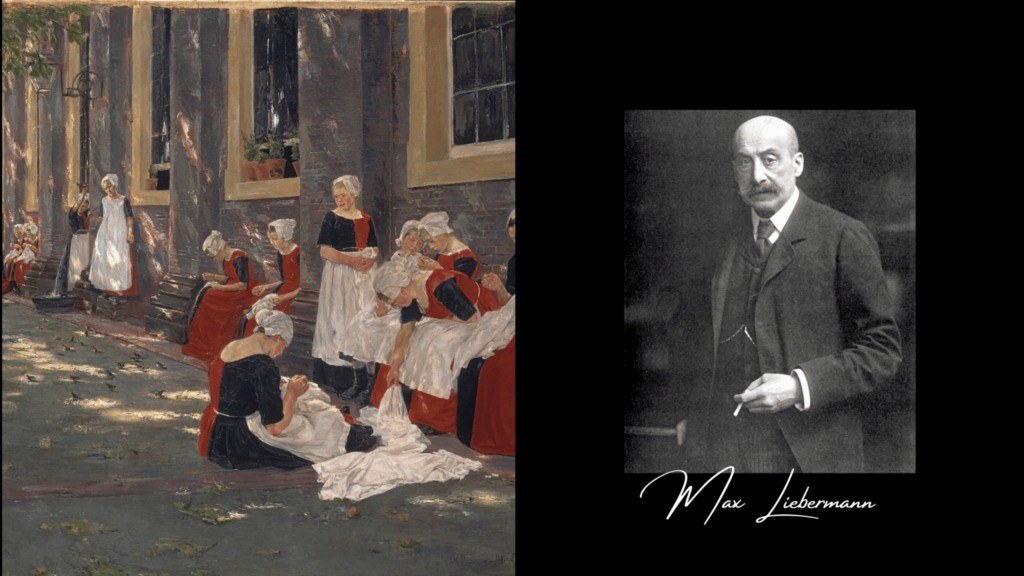

81 – Martin Johnson Heade (1819-1904)
Martin Johnson Heade (1819-1904) was an American painter known for his landscapes, still lifes, and marine scenes. He is often associated with the American Realist movement and the Luminist school.
Born in Luzerne County, Pennsylvania, Heade trained in Philadelphia before traveling across the United States and South America. His works are characterized by meticulous attention to detail and a masterful use of light and color.
82 – Hokusai (1760-1849)
Katsushika Hokusai (1760-1849) was a renowned Japanese painter and printmaker of the Edo period, best known for his woodblock prints. He is one of the most influential artists of ukiyo-e, a genre of Japanese art that depicts scenes of daily life, landscapes, kabuki actors, and beautiful women.
Hokusai’s most iconic work is The Great Wave off Kanagawa (or simply The Great Wave), which is part of his series Thirty-Six Views of Mount Fuji. This print has become a symbol of Japanese art and is widely recognized for its bold use of color and dynamic representation of the crashing wave.

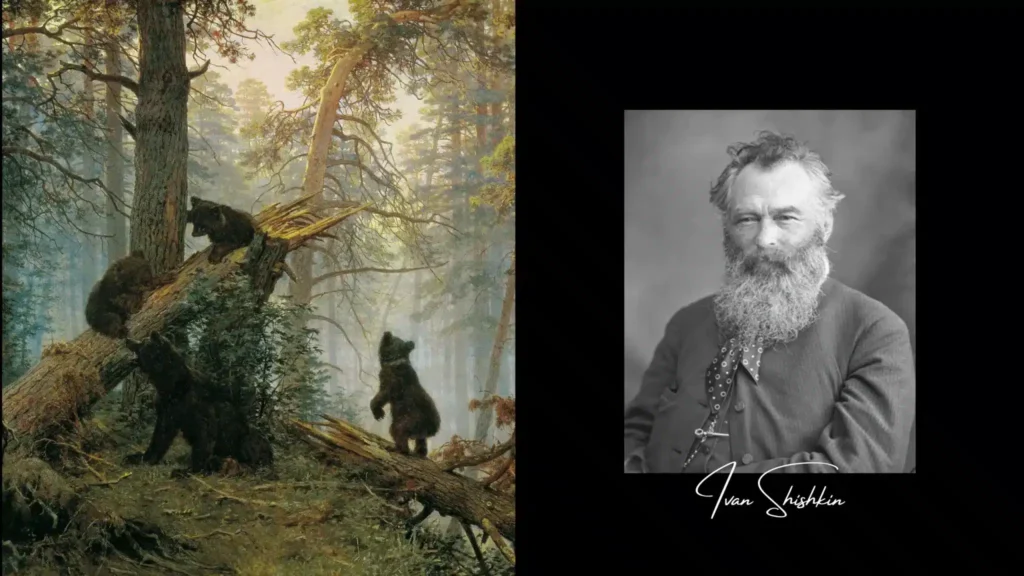
83 – Ivan Shishkin (1832-1898)
Ivan Shishkin (1832-1898) was a Russian landscape painter renowned for his detailed and majestic depictions of nature. He is considered one of the leading figures of 19th-century Russian Realism.
Shishkin is best known for his landscapes of forests, fields, and rivers, capturing the wild beauty and grandeur of the Russian countryside. His style is characterized by meticulous attention to detail and a deep respect for the natural aspects of his subjects. His paintings often feature soft lighting, a rich color palette, and a sense of serenity.
84 – Edwin Landseer (1802-1873)
Edwin Landseer (1802-1873) was a British painter renowned for his portraits of animals, particularly dogs and horses, as well as his depictions of wildlife. His ability to capture the expressions and attitudes of animals with remarkable precision and sensitivity made him very popular in the 19th century.
Born in London and trained by his father, a sculptor, Landseer began exhibiting his work at a young age and quickly gained a reputation for his detailed and vivid paintings of animals. His style is often associated with Realism, though he also incorporated elements of Romanticism and Symbolism into his work.
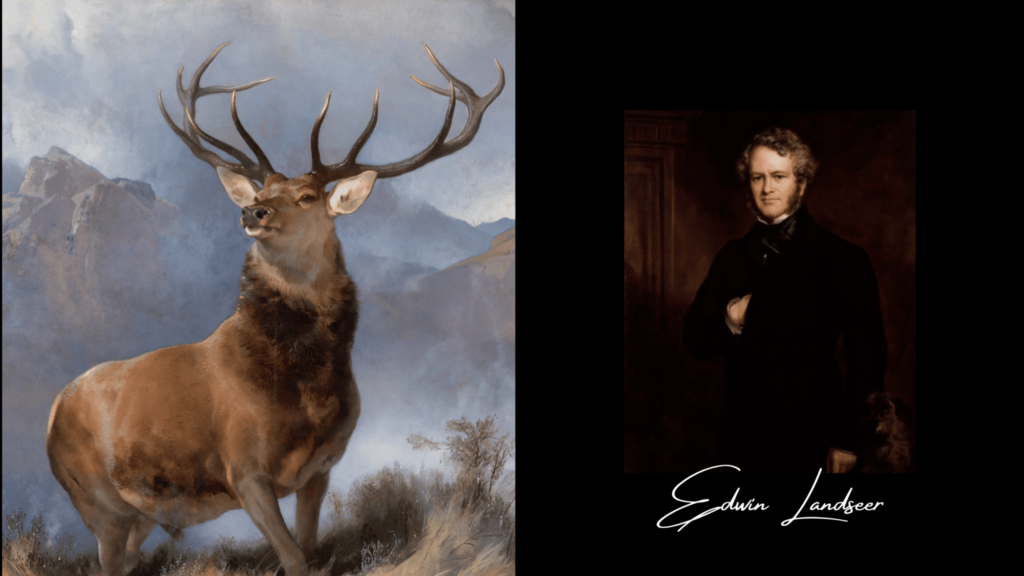

85 – Frederic Remington (1861-1909)
Frederic Remington (1861-1909) was an American painter, sculptor, and illustrator renowned for his depictions of life in the American West and themes related to the Frontier. His work is strongly associated with the romantic portrayal of cowboys, Native Americans, and scenes from the Old West.
Born in Canton, New York, Remington grew up with a fascination for Western narratives. His career took off when he began illustrating magazines and publications focused on Western themes. He also produced numerous sculptures and paintings that capture the movement, energy, and spirit of the characters he portrayed.
86 – Canaletto (1697-1768)
Giovanni Antonio Canal, better known as Canaletto (1697-1768), was a Venetian painter renowned for his detailed and accurate views of Venice and other Italian cities. He is considered one of the masters of the vedutismo genre, which focuses on realistic and architectural depictions of urban landscapes.
Born in Venice, Canaletto was initially trained as a scene painter before specializing in city views. His works are distinguished by their meticulous attention to architectural details, precise perspective, and skilled use of light to capture the atmosphere of his subjects.
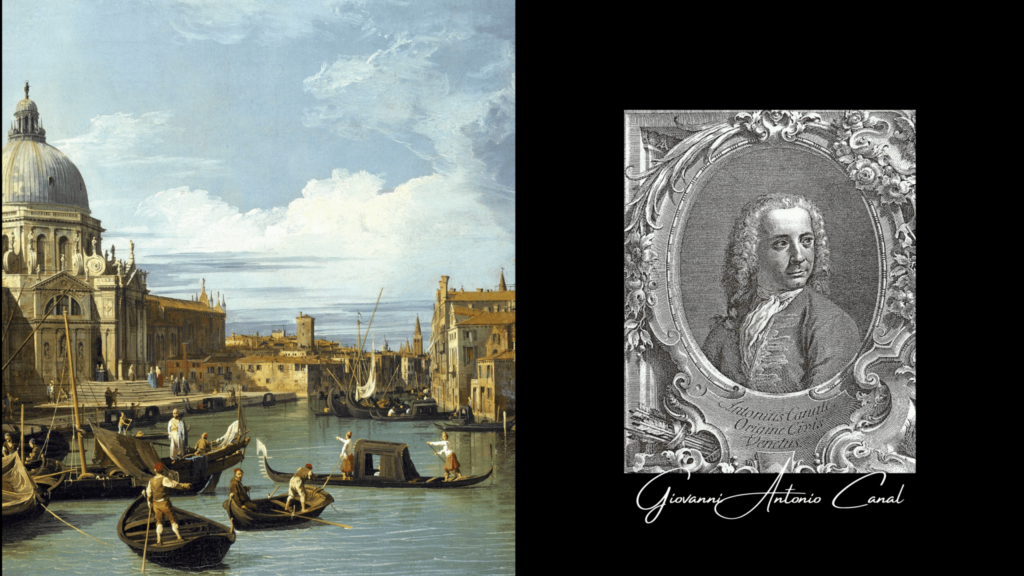
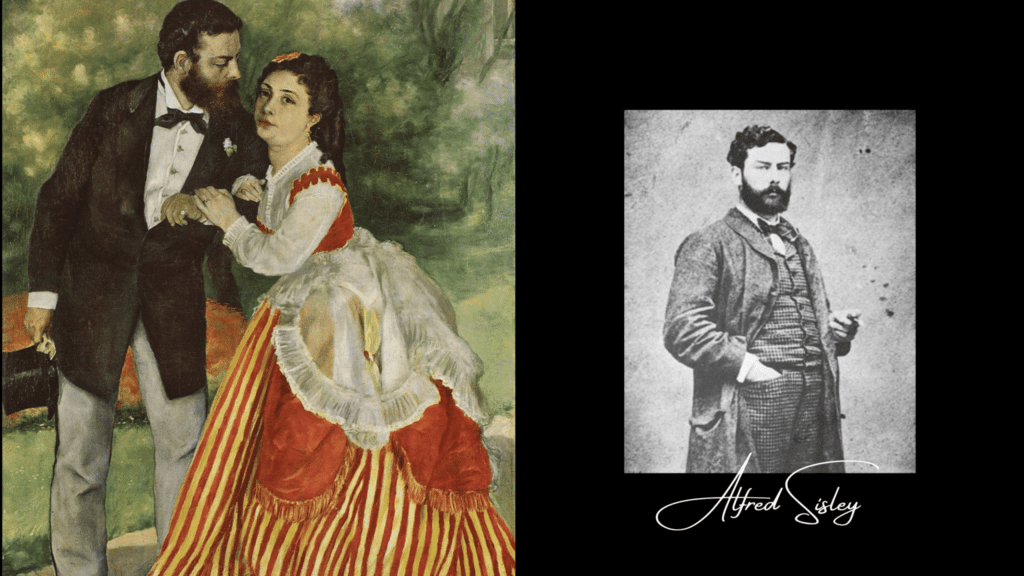
87 – Alfred Sisley (1839-1899)
Alfred Sisley (1839-1899) was a French Impressionist painter of British origin, known for his landscapes and scenes of everyday life. He was one of the leading figures of the Impressionist movement, alongside Claude Monet, Pierre-Auguste Renoir, and Camille Pissarro.
Born in Paris to British parents, Sisley studied at the École des Beaux-Arts in Paris. He was deeply influenced by Impressionist techniques, particularly the use of light and color to capture atmospheric effects and the variations of light on the landscape.
88 – George Stubbs (1724-1806)
George Stubbs (1724-1806) was an English painter renowned for his animal portraits, particularly of horses. He is regarded as one of the greatest animal painters in British art history, celebrated for his anatomical precision and his ability to capture the character of animals.
Born in Liverpool, Stubbs initially worked as an illustrator and engraver before focusing on painting. He gained a reputation for his realistic depictions of horses, often portraying them in action to highlight their power and elegance. His works include racehorse portraits, hunting scenes, and anatomical studies of horses, reflecting his deep interest in animal biology.
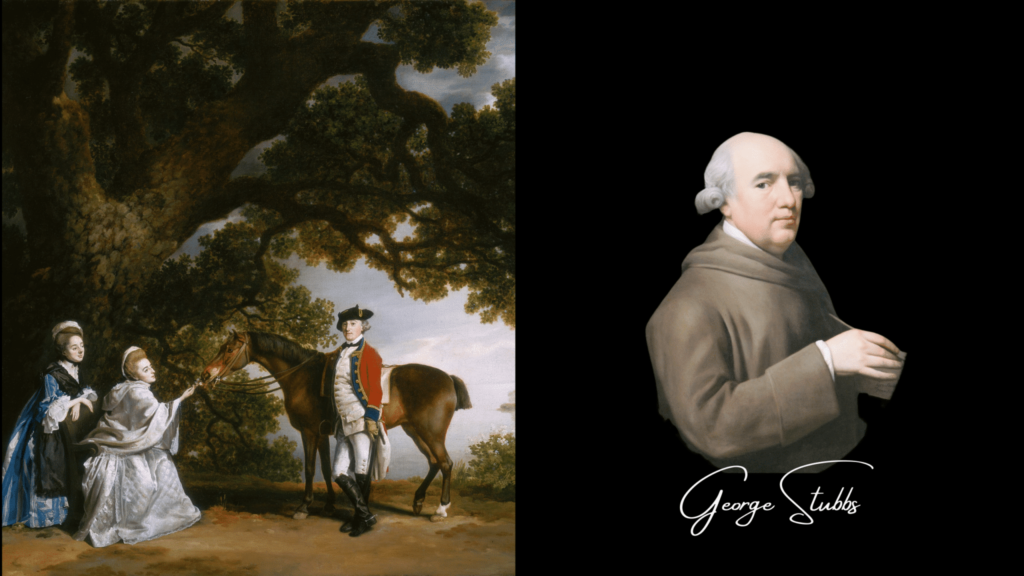
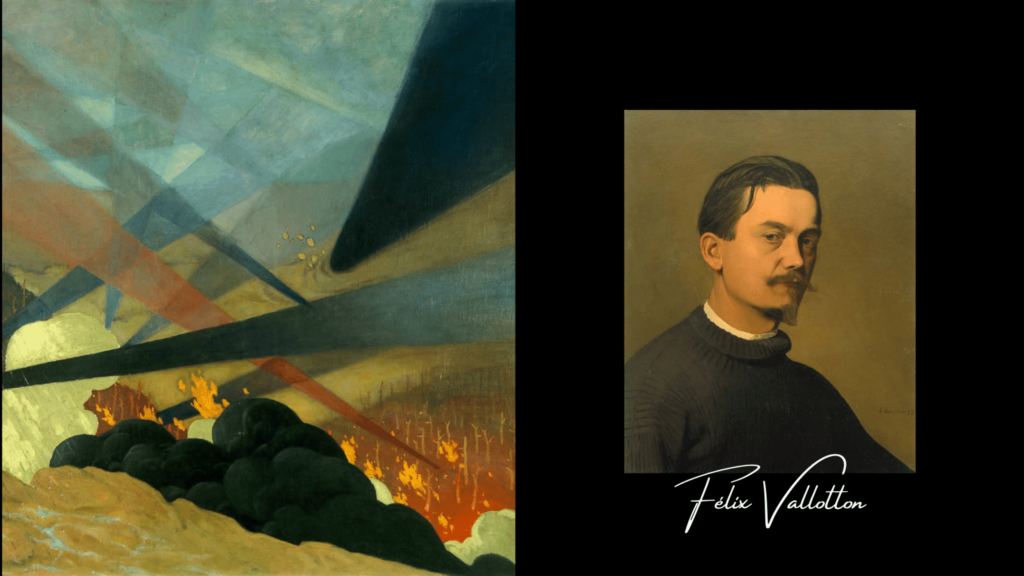
89 – Félix Vallotton (1865-1925)
Félix Vallotton (1865-1925) was a Swiss painter, printmaker, and writer, and a significant member of the Nabi group, a post-Impressionist movement that emerged in France in the late 19th century. Vallotton is known for his diverse body of work, which includes paintings, woodcuts, portraits, and genre scenes.
His work is often characterized by a distinctive style that blends precise pictorial technique with influences from Japanese art and Symbolist elements. Vallotton is recognized for his rigorous compositions, intense colors, and innovative use of light and shadow contrasts.
90 – Edouard Vuillard (1868-1940)
Édouard Vuillard (1868-1940) was a French painter and printmaker associated with the Nabi movement, a group of post-Impressionist artists who explored new stylistic and Symbolist approaches in their work. Vuillard is best known for his paintings of interior scenes and intimate compositions, often inspired by domestic life and familiar environments.
Born in Lyon, Vuillard studied at the École des Beaux-Arts in Paris. He developed a distinctive style characterized by decorative patterns, innovative use of color, and intricate compositions that incorporate elements of interior design. His work is noted for its attention to detail and its ability to create intimate and serene atmospheres.
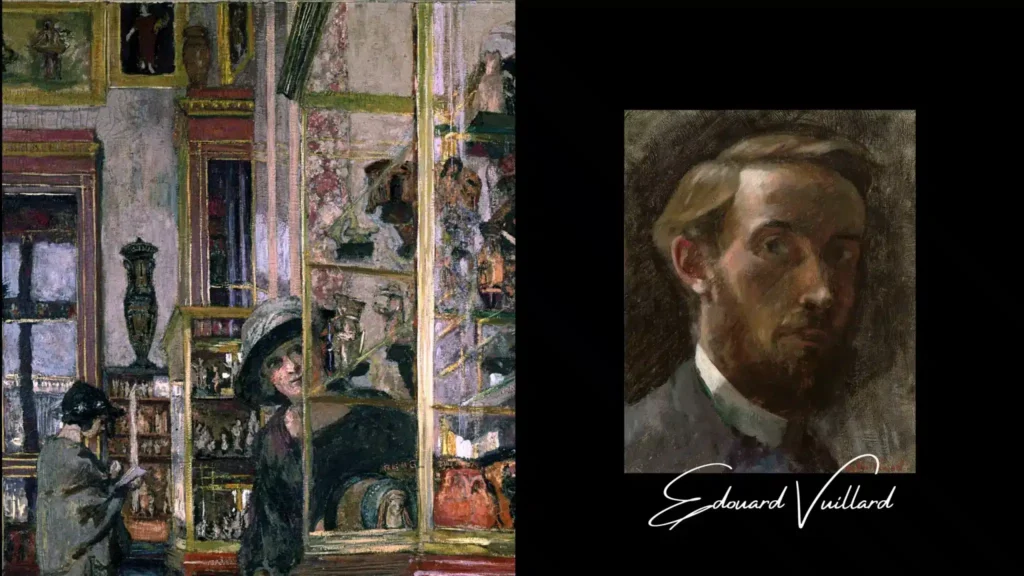
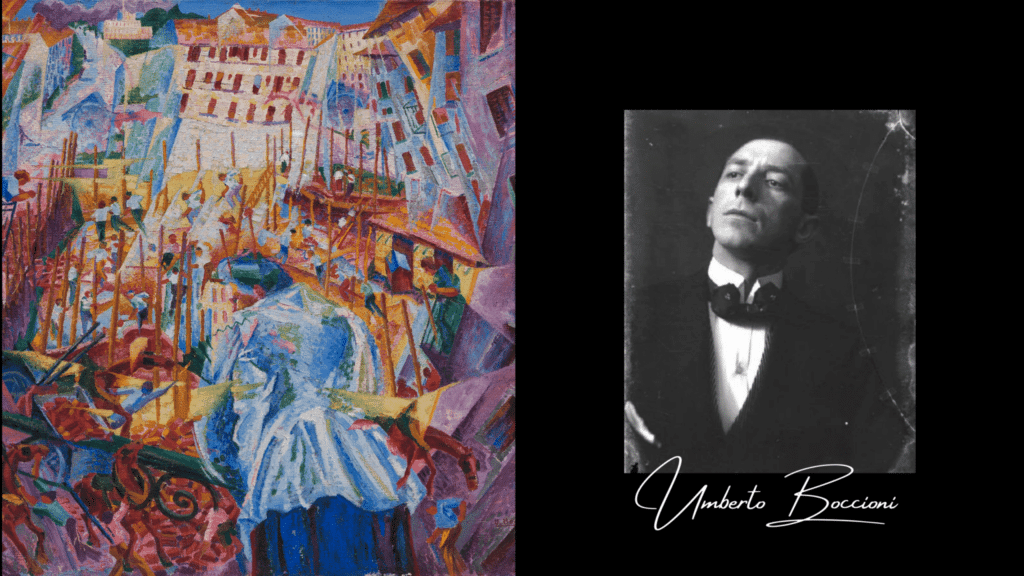
91 – Umberto Boccioni (1882-1916)
Umberto Boccioni (1882-1916) was an Italian painter and sculptor, a leading figure in the Futurist movement, an early 20th-century art movement that emphasized speed, dynamism, and technological innovation. Boccioni is known for his works that explore movement and energy, reflecting the spirit of the modern era.
Born in Reggio Calabria, Italy, Boccioni studied in Milan and became involved with Futurism after being influenced by the ideas of Filippo Tommaso Marinetti, the movement’s founder. His works are characterized by a bold approach to color, form, and composition, aiming to capture the movement and evolution of modernity.
92- Jules Breton (1879-1944)
Jules Breton (1827-1906) was a French painter associated with the Realist movement, renowned for his depictions of rural life in France. He is best known for his genre scenes that illustrate the lives of peasants and laborers in a romantic and naturalistic style.
Born in Courrières, Pas-de-Calais, Breton studied at the École des Beaux-Arts in Paris and was influenced by Realist masters such as Jean-François Millet. His works are characterized by meticulous attention to detail and a sensitivity to the beauty of everyday country life.
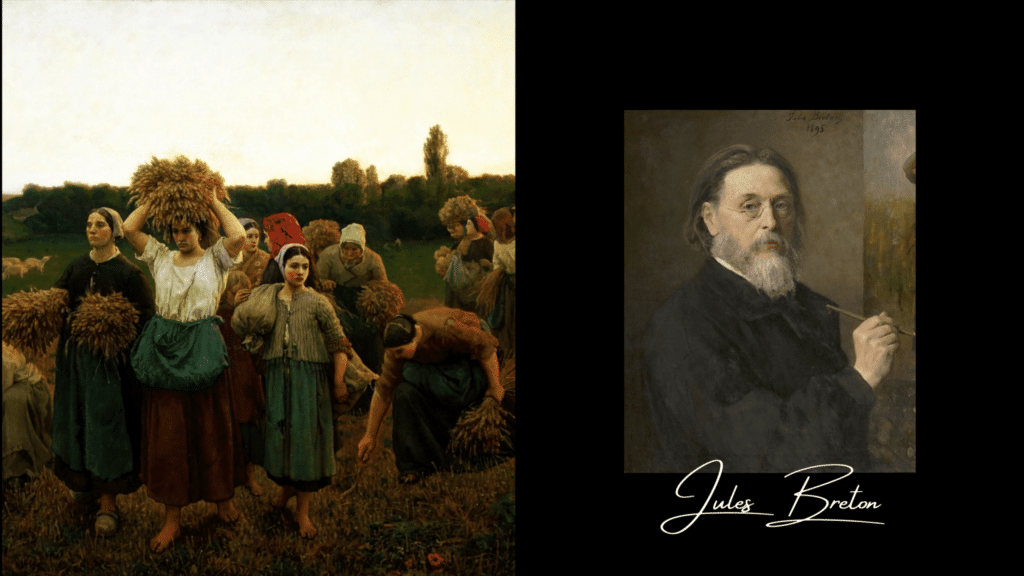

93 – Amedeo Modigliani (1884-1920)
Amedeo Modigliani (1884-1920) was an Italian painter and sculptor renowned for his portraits and nudes characterized by elongated forms, stylized faces, and a unique aesthetic sensibility. His style is often associated with the École de Paris and early 20th-century modernism.
Born in Livorno, Italy, Modigliani studied at the Academy of Fine Arts in Florence before moving to Paris in 1906. In Paris, he was influenced by contemporary artistic movements, including Fauvism and Cubism. However, his work evolved into a distinctive style that blended elements of African art and Italian Renaissance art with a personal touch.
94 – Arnold Böcklin (1827-1901)
Arnold Böcklin (1827-1901) was a Swiss painter whose work is often associated with Symbolism and Romanticism. Born in Basel, Böcklin is known for his evocative and mystical paintings that explore themes of mythology, dreams, and nature.
His style is characterized by a dramatic use of color and light, as well as compositions imbued with a fantastical atmosphere. Böcklin tackled a range of subjects, including dreamlike landscapes, mythological scenes, and representations of nature in supernatural contexts.

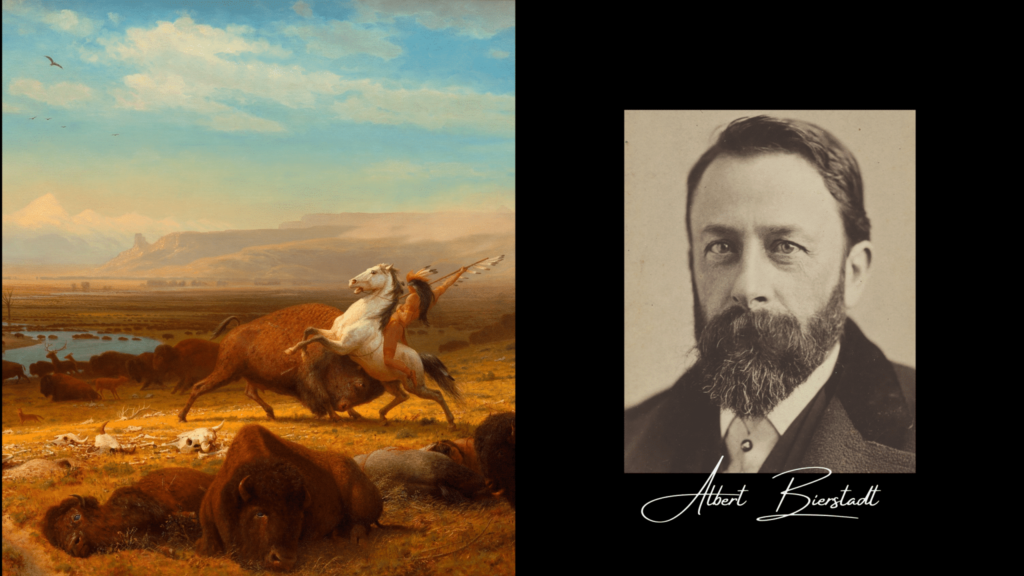
95 – Albert Bierstadt (1830-1902)
Albert Bierstadt (1830-1902) was a German-American painter renowned for his grand and detailed depictions of the American West. He is associated with the Realist movement and the Hudson River School, a group focused on painting majestic and natural American landscapes.
Born in Prussia (now Germany), Bierstadt emigrated to the United States with his family in 1831 and grew up in New Bedford, Massachusetts. He studied at the Düsseldorf Academy of Fine Arts before returning to the United States to focus on painting.
96 – Cassius Marcellus Coolidge (1844-1944)
Cassius Marcellus Coolidge (1844-1934) was an American painter best known for his humorous works depicting dogs playing card games, most notably in the series Dogs Playing Poker. These paintings have become iconic images in American popular culture.
Born in Antwerp, New York, Coolidge initially worked as an illustrator before gaining recognition for his paintings. Although he produced a variety of works throughout his career, it is his poker-playing dogs that have cemented his reputation. These paintings are characterized by their humor and cartoonish style, featuring anthropomorphized dogs in comical situations.
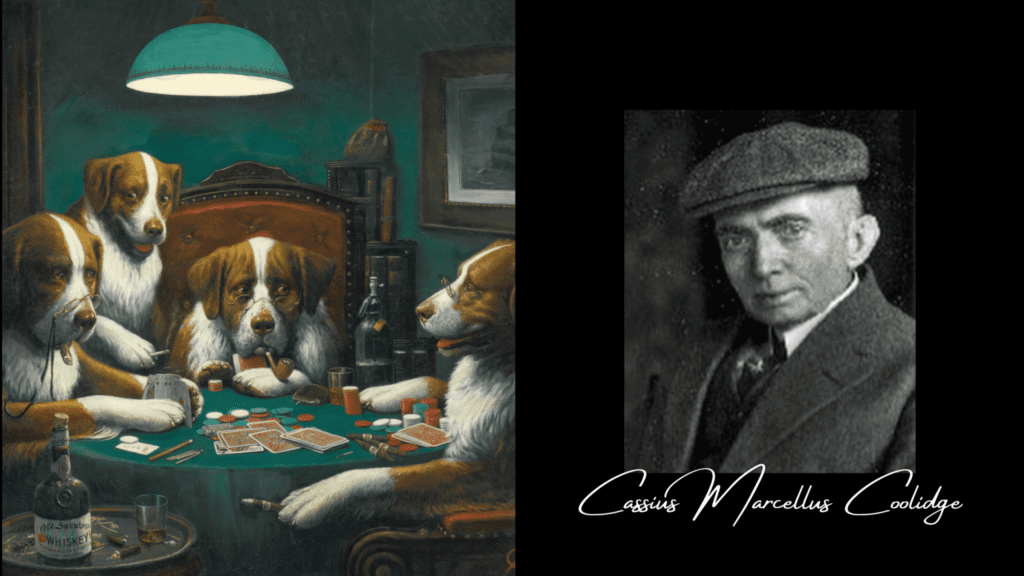
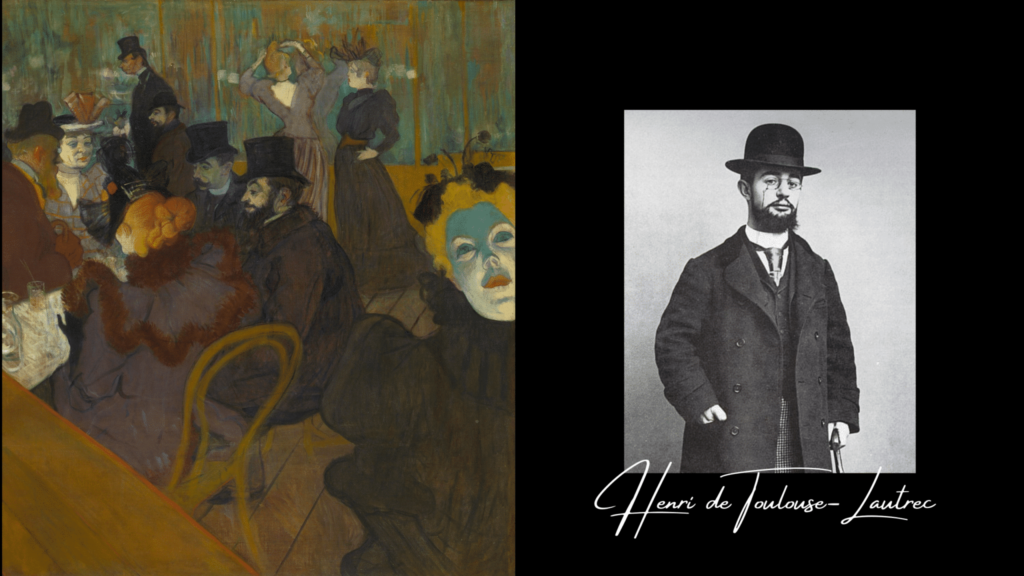
97- Henri de Toulouse-Lautrec (1864 – 1901)
Henri de Toulouse-Lautrec (1864-1901) was a French painter, poster artist, and lithographer renowned for his vibrant and expressive portrayals of Parisian nightlife in the late 19th century. As a significant figure in the Post-Impressionist movement, Toulouse-Lautrec is best known for his works that capture the energy and dynamism of the cabarets, theaters, and popular districts of Paris.
Born into an aristocratic family in Albi, France, Toulouse-Lautrec experienced health issues throughout his life that stunted his physical growth but did not hinder his artistic talent. He studied at the École des Beaux-Arts in Paris and was influenced by artists such as Edgar Degas and the Impressionists.
98- Childe Hassam (1859-1935)
Childe Hassam (1859-1935) was an American painter known for his significant role in the development of Impressionism in the United States. Born in Boston, Hassam studied at the School of the Museum of Fine Arts in Boston and was influenced by French Impressionists as well as Art Nouveau.
Hassam is particularly recognized for his urban landscapes and everyday scenes in New York, as well as his works depicting summer, parks, and beaches. His paintings are distinguished by their vibrant use of color and a brush technique that reflects the influence of European Impressionism. He often featured American flags and urban landscapes with a sense of patriotism and attention to detail.

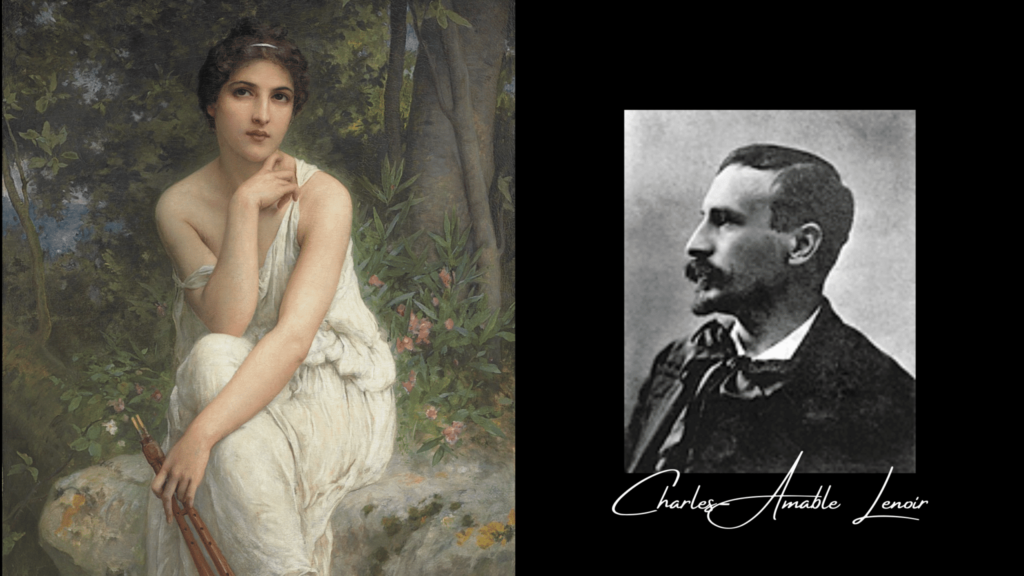
99- Charles-Amable Lenoir (1860 – 1926)
Charles-Amable Lenoir (1806-1868) was a French painter and lithographer associated with the Realist movement and the development of 19th-century art. He is best known for his depictions of genre scenes, landscapes, and portraits.
Born in Paris, Lenoir studied at the École des Beaux-Arts in Paris. Influenced by Realist artists of his time, such as Gustave Courbet and Jean-François Millet, he contributed to the portrayal of everyday life with a sensitive eye and attention to detail.
100 – Claude Lorrain (1600-1682)
Claude Lorrain (1600-1682), born Claude Gellée, was a French painter of the 17th century renowned for his idealized landscapes and pastoral scenes. He is often regarded as one of the masters of classical landscape painting in Europe and had a significant influence on the development of the landscape genre in Western art.
Born in Chamagne, France, Claude Lorrain grew up in Rome, where he worked and was influenced by the Renaissance masters. He is best known for his luminous and poetic landscapes, often characterized by harmonious compositions, spectacular effects of light, and meticulous attention to natural details.
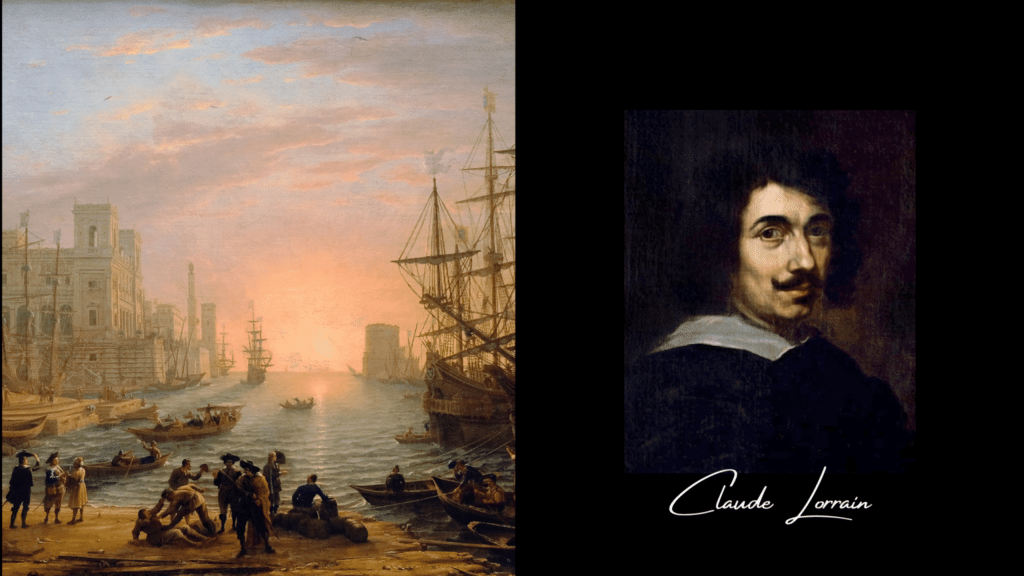

101 – Joan Miró (1893-1983)
Joan Miró (1893-1983) was a Spanish painter, sculptor, and ceramicist, widely recognized as a major figure in surrealism and modernism. His work is distinguished by its use of abstract forms, vivid colors, and poetic symbols.
Born in Barcelona, Miró studied at the School of Fine Arts of La Llotja and was influenced by European avant-garde movements, including Cubism, Surrealism, and Fauvism. He is known for his compositions that blend abstraction with figuration, often featuring organic shapes and dreamlike elements.
102 – Egon Schiele (1890-1918)
Egon Schiele (1890-1918) was an Austrian painter associated with the Expressionist movement, renowned for his intense and provocative works that delve into human psychology, sexuality, and the human condition. Born in Tulln, Austria, Schiele was a protégé of Gustav Klimt and was influenced by Symbolism and Art Nouveau.
Schiele is best known for his portraits and self-portraits, characterized by bold lines, distorted forms, and often dark color palettes. His works exhibit a high degree of expressiveness and emotional intensity, with a keen focus on posture, body, and the psychological expression of his subjects.
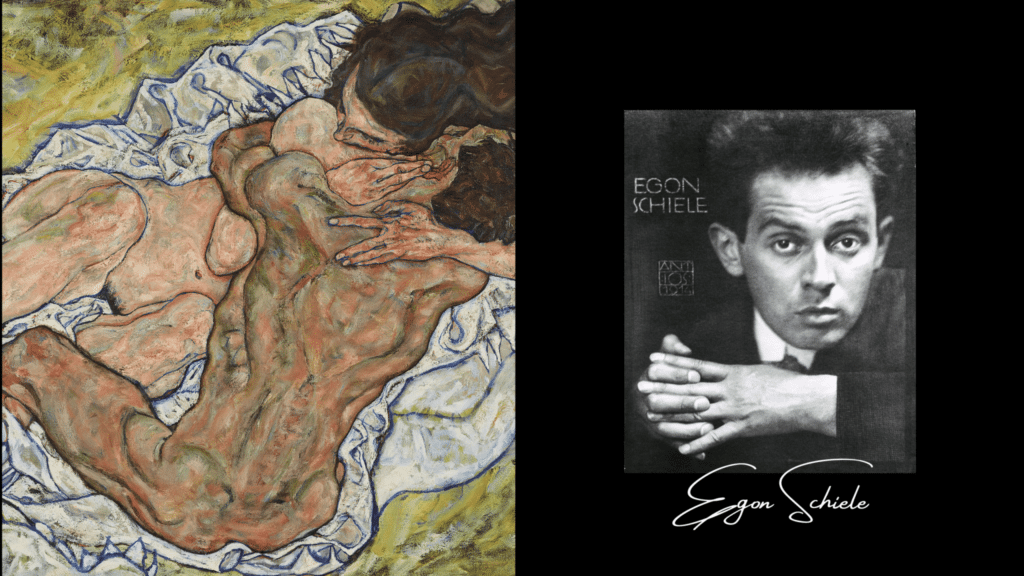

103 – Henri Matisse (1869-1954)
Henri Matisse (1869-1954) was a French painter, draughtsman, and sculptor, central to the Fauvist movement of the early 20th century, which emphasized bold and expressive use of color. Matisse is often regarded as a master of color and composition, and his work had a profound influence on the development of modern art.
Born in Le Cateau-Cambrésis, France, Matisse studied at the École des Beaux-Arts in Paris and was influenced by the Impressionists and Post-Impressionists. He developed a distinctive style characterized by vibrant colors, simplified forms, and innovative uses of color to express emotions and ideas.
104 – Jackson Pollock (1912-1956)
Jackson Pollock (1912-1956) was an American painter and a leading figure in the Abstract Expressionist movement. Renowned for his unique “drip” painting technique, Pollock revolutionized how art was conceived and executed in the 20th century.
Born in Cody, Wyoming, Pollock grew up in the American West before moving to New York, where he was influenced by Surrealist artists and psychoanalytic theories. He is best known for his drip painting technique, in which he poured or splattered paint onto a canvas laid flat on the ground, using brushes, sticks, and other tools to create dynamic, spontaneous compositions.


105 – Edward Hopper (1882-1967)
Edward Hopper (1882-1967) was an American painter whose work is often associated with realism and modern art. He is best known for his poignant portrayals of solitude and melancholy in both urban and rural American scenes.
Born in Nyack, New York, Hopper studied at the Art Students League of New York and was influenced by realism and surrealism. His style is characterized by precise use of light, minimalist compositions, and meticulous attention to architectural details.
106 – Charles de Steuben (1788-1856)
Charles de Steuben (1778-1856) was a French painter and lithographer, best known for his work in the Neoclassical style and his contributions to lithographic art.
Born in Paris, Steuben studied at the École des Beaux-Arts and was influenced by the Neoclassical masters of his time. His work is characterized by technical precision, balanced compositions, and an elegant aesthetic that defines Neoclassicism.
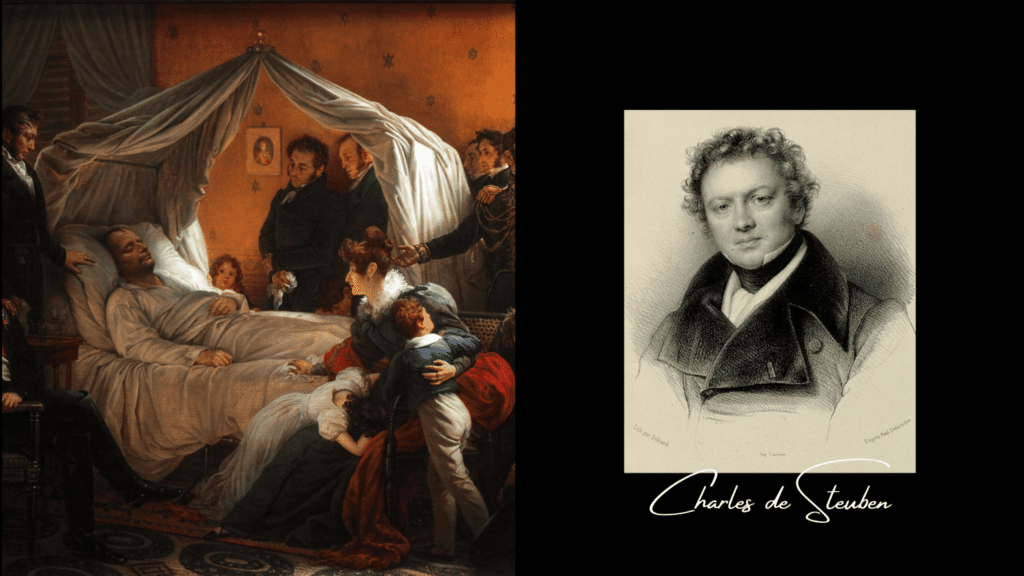
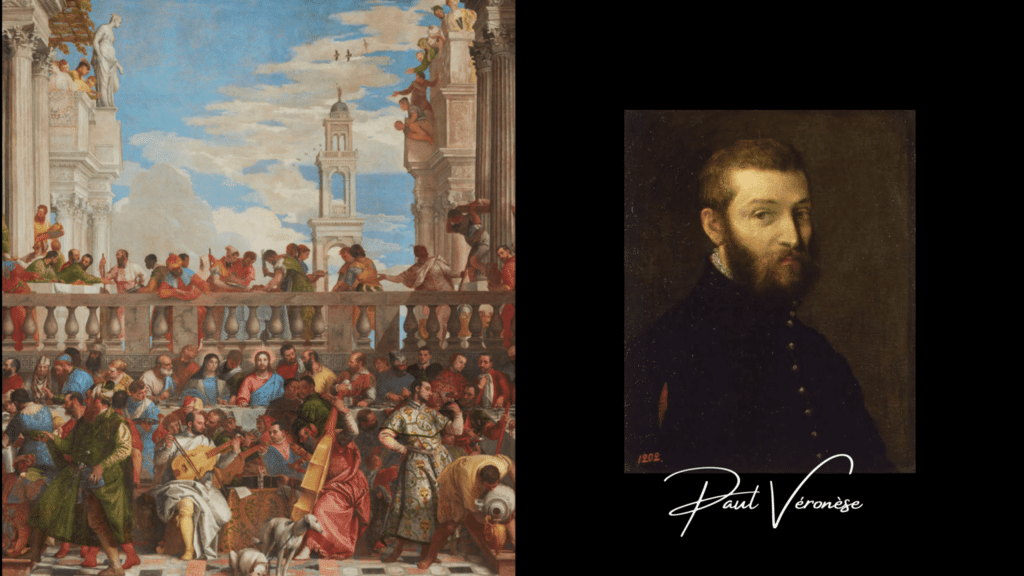
107 – Paolo Veronese (1528-1588)
Paolo Veronese (1528-1588) was a Venetian Renaissance painter known for his monumental works, elegant compositions, and lavish use of color. Born Paolo Caliari in Verona, he became famous under the name Paul Véronèse, referencing his hometown.
Véronèse is renowned for his large-scale religious, mythological, and historical paintings, characterized by their grandeur, decorative richness, and mastery of perspective. His works often feature elegant figures and lush scenes, highlighting sumptuous costumes and elaborate settings.
108 – Élisabeth Vigée Le Brun (1755-1842)
Élisabeth Louise Vigée Le Brun (1755-1842) was a French painter renowned as one of the most celebrated portraitists of the 18th century. She is particularly known for her elegant portraits and depictions of royal and aristocratic figures, including several portraits of Marie-Antoinette.
Born in Paris, Vigée Le Brun began her artistic career at a young age and quickly gained a reputation for her exceptional talent. Her portrait technique is characterized by meticulous attention to detail, mastery of color, and a remarkable ability to capture the personality and elegance of her subjects.

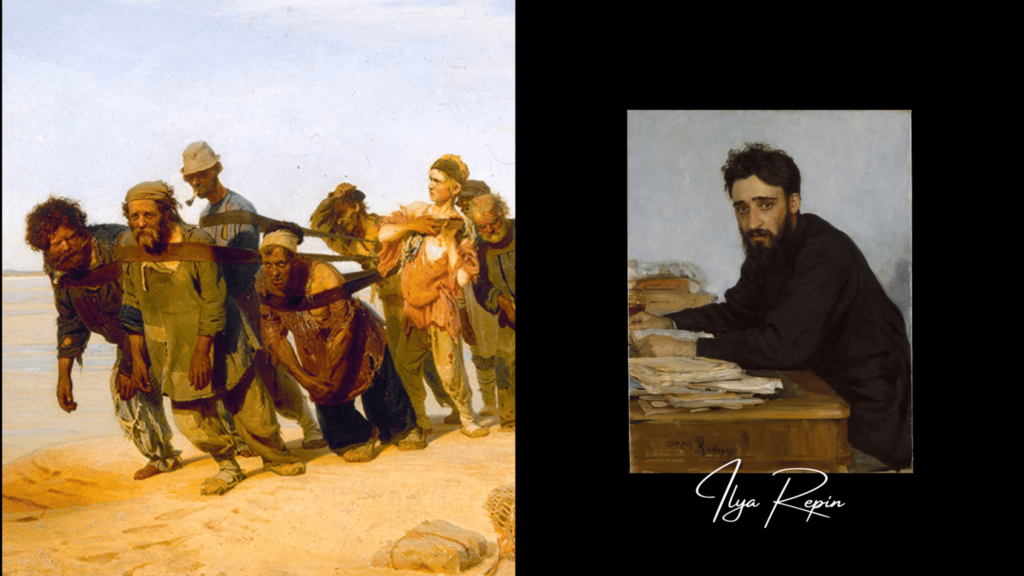
109 – Ilya Repin (1844-1930)
Ilya Repin (1844-1930) was a Russian painter renowned as one of the foremost masters of realism in Russia. He is celebrated for his poignant portraits, historical scenes, and vivid depictions of 19th-century Russian life.
Born in Chuguyev, Ukraine, Repin studied at the Academy of Fine Arts in Saint Petersburg and was influenced by the realist trends and European artistic movements of his time. His style is characterized by a detailed and expressive approach, highlighting intense emotions and dramatic aspects of his subjects.
110 – François Boucher (1703-1770)
François Boucher (1703-1770) was a French painter and draftsman, and one of the most celebrated artists of the Rococo style in the 18th century. His work is characterized by elegant sensuality, decorative compositions, and abundant use of pastel colors.
Born in Paris, Boucher studied under his father, a decorator, before continuing his education at the Royal Academy of Painting and Sculpture. He became one of the leading figures of Rococo, an artistic style known for its emphasis on lightness, charm, and decorative exuberance.


111 – Hieronymus Bosch (vers 1450-1516)
Hieronymus Bosch (c. 1450-1516) was a Dutch painter from the late Middle Ages, renowned for his fantastical and symbolic works. He is famous for his complex and visionary paintings that delve into themes of religion, morality, and illusion. His distinctive style is characterized by overflowing imagination, surreal landscapes, and grotesque figures.
One of his most famous works is The Garden of Earthly Delights, a triptych that presents a nightmarish vision of paradise, earthly life, and hell. His paintings are often interpreted as critiques of human corruption and sin, using symbols and metaphors to convey moral and religious ideas.
112 – Jan Matejko (1838-1893)
Jan Matejko (1838-1893) was a renowned Polish painter, celebrated for his grand historical compositions and epic battle scenes. He is regarded as one of Poland’s greatest painters, and his works played a significant role in preserving and celebrating Polish history.
Matejko is famous for his detailed paintings that depict major historical events, often with great historical accuracy and rich symbolism. Among his most well-known works are May 1, 1791 (celebrating the May 3rd Constitution) and The Battle of Grunwald (which represents a key victory against the Teutonic Knights).
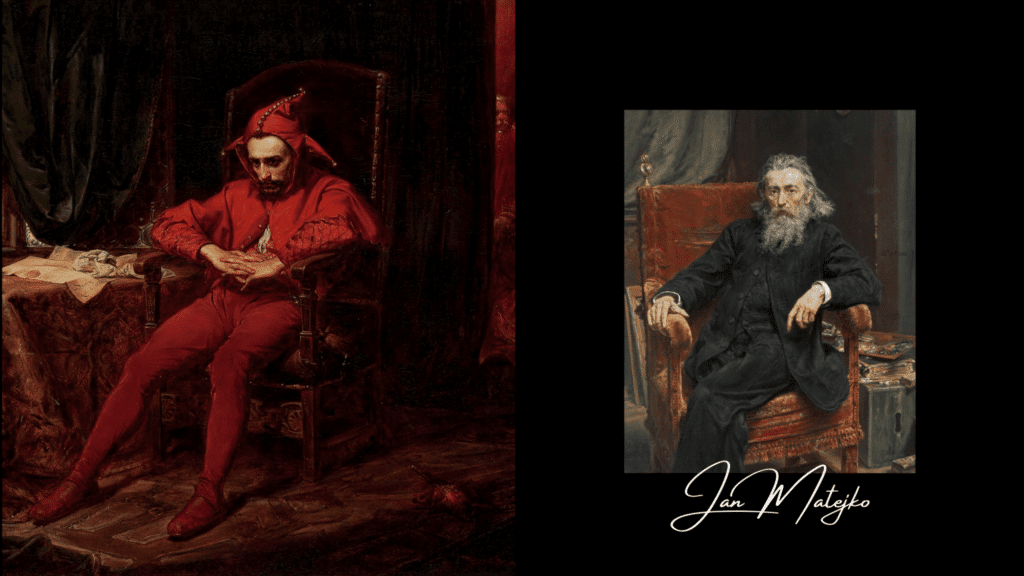

113 – Antonio Ciseri (1821-1891)
Antonio Ciseri (1821-1891) was a 19th-century Italian painter known for his neoclassical and academic style. He is particularly renowned for his religious and historical scenes, which are marked by meticulous attention to detail and a dramatic representation of emotions.
Among his most famous works are The Martyrdom of Saint Lawrence (which portrays the saint on a fiery grill with striking emotional intensity) and The Beheading of Saint John the Baptist (depicting the decapitation scene with dramatic realism). Ciseri was a master at creating grand compositions and expressive figures, often influenced by classical artistic traditions and Renaissance art.
114 – Jan van Eyck (vers 1390-1441)
Jan van Eyck (c. 1390-1441) was a Dutch painter of the Flemish Primitives period, renowned for his contributions to Northern Renaissance painting. He is considered one of the greatest masters of the 15th century and played a key role in the development of oil painting techniques.
Van Eyck is best known for his works noted for their detail, realism, and complexity. Among his most famous pieces are The Arnolfini Portrait (also known as The Wedding of the Arnolfini), celebrated for its intricate details and innovative use of light and texture, and The Three Marys, which showcases impressive mastery of chiaroscuro and perspective.
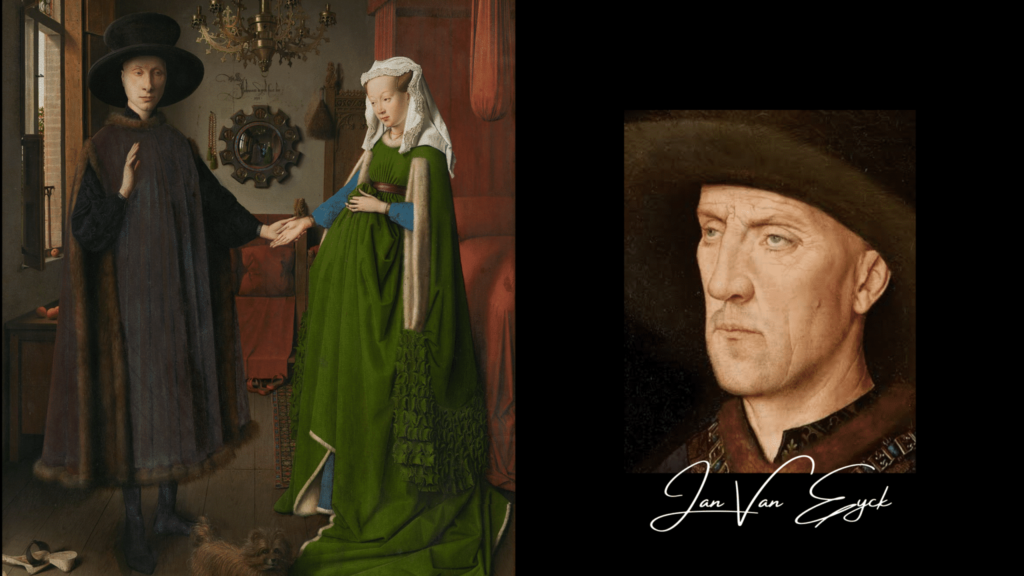
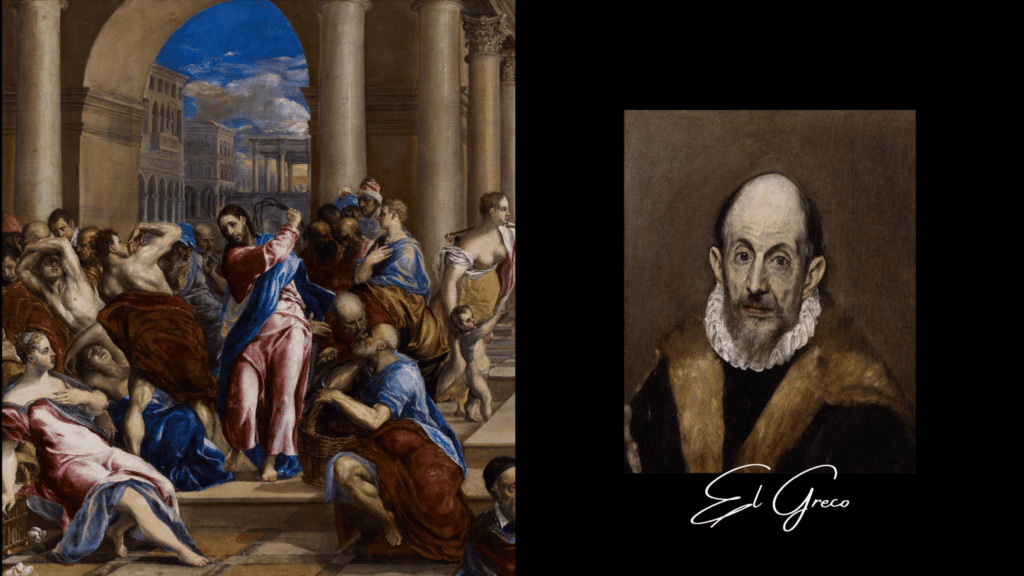
115 – El Greco (1541-1614)
El Greco (1541-1614), born Domenikos Theotokopoulos, was a Greek painter, sculptor, and architect who worked primarily in Spain. He is renowned for his unique style, which combines elements of the Renaissance, Mannerism, and Baroque with a deeply personal approach.
His art is characterized by elongated forms, dramatic compositions, and an expressive use of color. El Greco is known for his intensely spiritual and emotional depictions, often inspired by religious themes. His works feature slender figures and dynamic poses, marked by a sense of mystical expression and strong contrasts between light and dark.
116 – Hans Holbein The Younger (1497/1498-1543)
Hans Holbein the Younger (c. 1497-1543) was a German painter and draftsman of the Renaissance, renowned for his remarkable portraits and works of great precision. He is especially known for his portraits of influential figures of his time, including members of the English court.
Holbein moved to England in 1532, where he worked as court painter for King Henry VIII. His portraits of the royal family and the English court, such as Portrait of Thomas More and The Ambassadors, are celebrated for their meticulous realism and their ability to capture the psychological and social characteristics of his subjects.
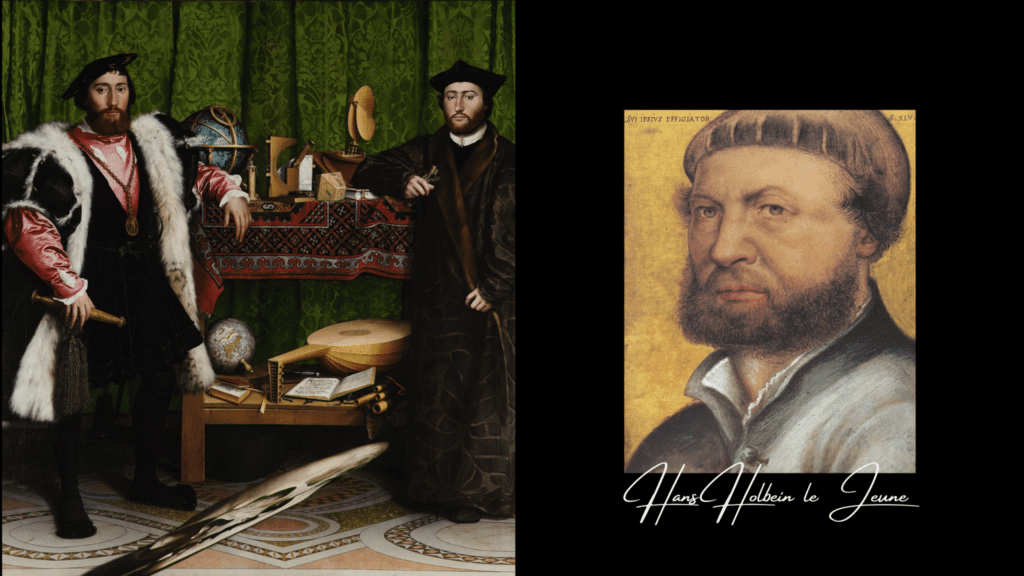

117 – Edward Poynter (1836-1919)
Edward Poynter (1836-1919) was a British painter of the Victorian era, known for his historical and allegorical works. Associated with the Pre-Raphaelite movement, he was also an influential member of the Royal Academy.
Poynter is especially celebrated for his grand historical and mythological compositions, which are distinguished by their meticulous detail, vivid color, and academic style. Notable works include The Return of Abelard and The Virgin and Child with Saints.
118 – John Martin (1789-1854)
John Martin (1789-1854) was a British painter renowned for his grand-scale works and dramatic scenes inspired by biblical and apocalyptic themes. He is considered a master of Romantic sublimity, with a style characterized by spectacular compositions and striking use of light and shadow.
Martin is famous for his panoramic paintings and illustrations of grand subjects, such as The Deluge, The Fall of Babylon, and The Last Judgment. His works are often marked by an epic and theatrical vision, featuring majestic landscapes and figures that create a powerful and dramatic visual effect.
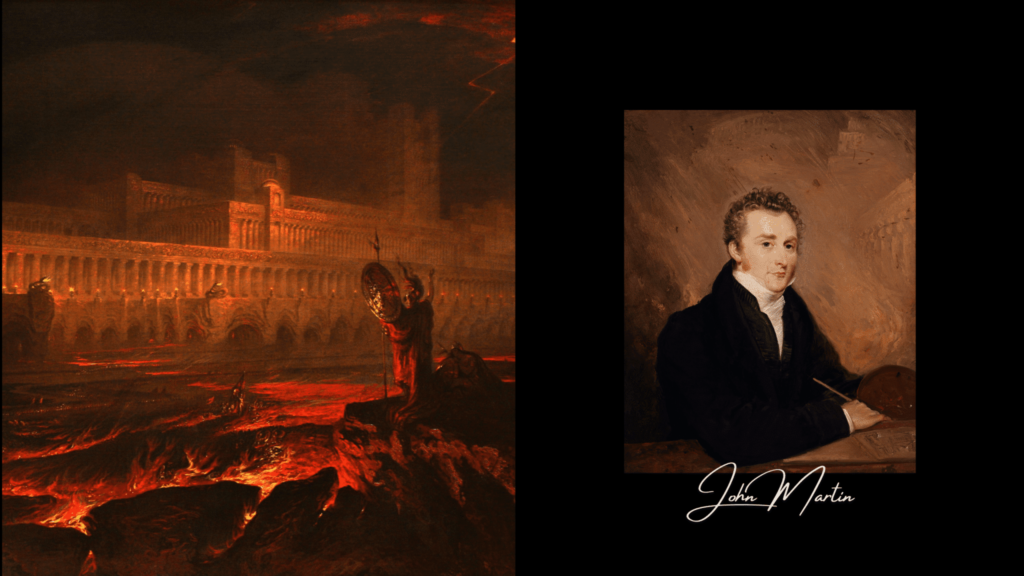

119 – John Singleton Copley (1738-1815)
John Singleton Copley (1738-1815) was an American painter born in Boston, renowned for his remarkable portraits and historical scenes. He is considered one of the greatest portraitists of his time, with a style that combines realistic precision with elegant composition.
Copley began his career by painting portraits of Boston’s high society, capturing the intricate details of clothing, expressions, and accessories with great finesse. Among his most famous works are the portraits of Paul Revere, Samuel Adams, and John Hancock. His paintings demonstrate impressive technical mastery and meticulous attention to detail, setting them apart in the artistic landscape of the era.
120 – Thomas Lawrence (1769-1830)
Thomas Lawrence (1769-1830) was a renowned British painter of the early 19th century, best known for his elegant and dramatic portraits. Born in Bristol, he began his career as a child prodigy, creating portraits from a young age. Lawrence gained fame for his portraits of high society, including royal figures, aristocrats, and political personalities.
His style is distinguished by an expressive use of color and a fluid brush technique that imparts a lively and dynamic quality to his portraits. Among his most famous works are the portraits of George IV, the Duke of Wellington, and Queen Charlotte. Lawrence was also an influential member of the Royal Academy, and his work significantly contributed to the reputation of British portrait painting in the 19th century.

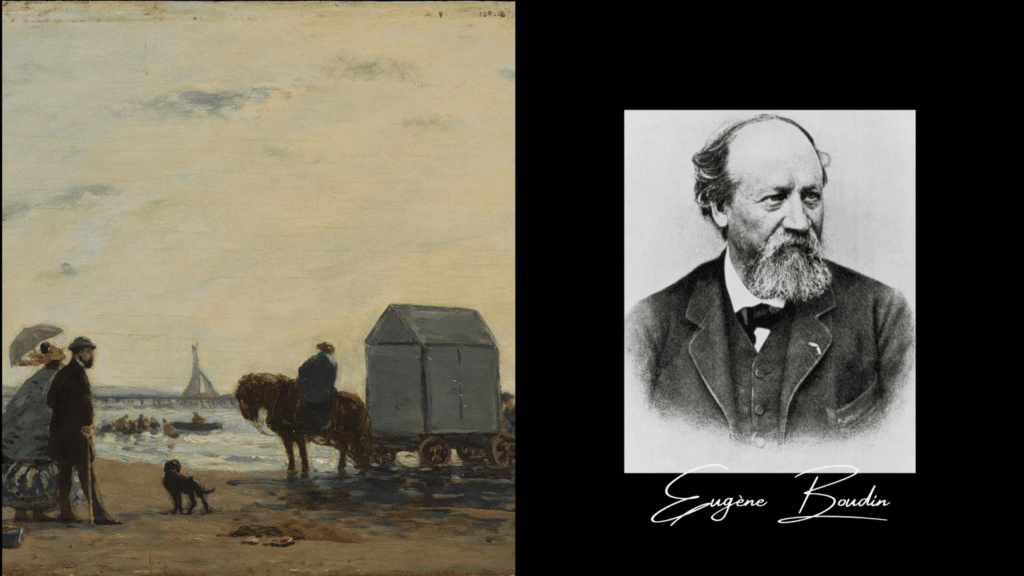
121 – Eugène Boudin (1824-1898)
Eugène Boudin (1824-1898) was a French painter associated with the Impressionist movement. Born in Honfleur, Normandy, he is particularly renowned for his maritime landscapes and coastal scenes.
Boudin was a precursor to Impressionism, influencing artists like Claude Monet. He developed a distinctive technique characterized by rapid brushstrokes and a bright color palette to capture light and atmosphere. His works reflect a keen attention to the quality of light and how it interacts with surfaces, such as beaches, skies, and boats.
122 – Giambattista Tiepolo (1696-1770)
Giambattista Tiepolo (1696-1770) was an Italian painter of the 18th century, celebrated for his grandiose Baroque works. Born in Venice, he is renowned for his vibrant frescoes, dynamic compositions, and mythological and historical scenes.
Tiepolo is especially known for his ability to create dramatic effects of light and color, as well as his sense of grandeur and movement. His frescoes adorn numerous palaces and churches, with notable works including those in the Würzburg Residence in Germany and the Palazzo dei Contarini in Venice.


123 – Titian (Tiziano Vecellio, 1488/1490-1576)
Titian (Tiziano Vecellio) (c. 1488-1576) is one of the greatest masters of Venetian Renaissance painting. Born in Pieve di Cadore, Italy, he is renowned for his exceptional mastery of color and his ability to capture emotions and textures with remarkable precision.
Titian is celebrated for his portraits, religious paintings, and mythological scenes. Among his most notable works are The Venus of Urbino, The Assumption of the Virgin, and The Bacchanals. He is also known for his series of portraits of significant figures such as Charles V and Philip II of Spain.
124 – Pablo Picasso (1881-1973)
Pablo Picasso (1881-1973) is one of the most influential and prolific artists of the 20th century. Born in Málaga, Spain, he is best known for his pivotal role in the development of Cubism, a movement he co-founded with Georges Braque.
Picasso’s career is marked by an extraordinary range of styles and periods. He began with a realistic and academic approach before venturing into bold experimentation. His work is characterized by constant creativity and a willingness to explore various styles, ranging from the Blue and Rose periods to Cubism, Surrealism, and beyond.


125 – Salvador Dalí (1904-1989)
Salvador Dalí (1904-1989) was a Spanish artist renowned for his central role in the Surrealist movement. Born in Figueres, Catalonia, Dalí is celebrated for his provocative and imaginative works that delve into dreams, the unconscious, and the irrational.
Dalí is known for his meticulously detailed and often bizarre paintings that challenge conventional notions of reality. His iconic works include The Persistence of Memory, with its melting clocks, and The Great Masturbator, reflecting his interest in psychological themes and personal symbolism.
Conclusion of The 100 Most Famous Artists of All Time
Through this captivating journey exploring the 100 most famous artists of all time, we have traversed various facets of art, from the Renaissance to Modernism, including Baroque, Romanticism, and Realism. Each artist, with their unique style and creative vision, has left an indelible mark on the history of art, enriching our understanding of the world and humanity.
Art Reproduction Oil Painting & Original Art for sale
Discover the excellence of Art Reproduction Oil Painting & Original Art for sale with Master Apollon. Specializing in the creation of high-end reproductions, our website offers a wide selection of oil paintings reproduction and original artworks on canvas, crafted with exceptional attention to detail.
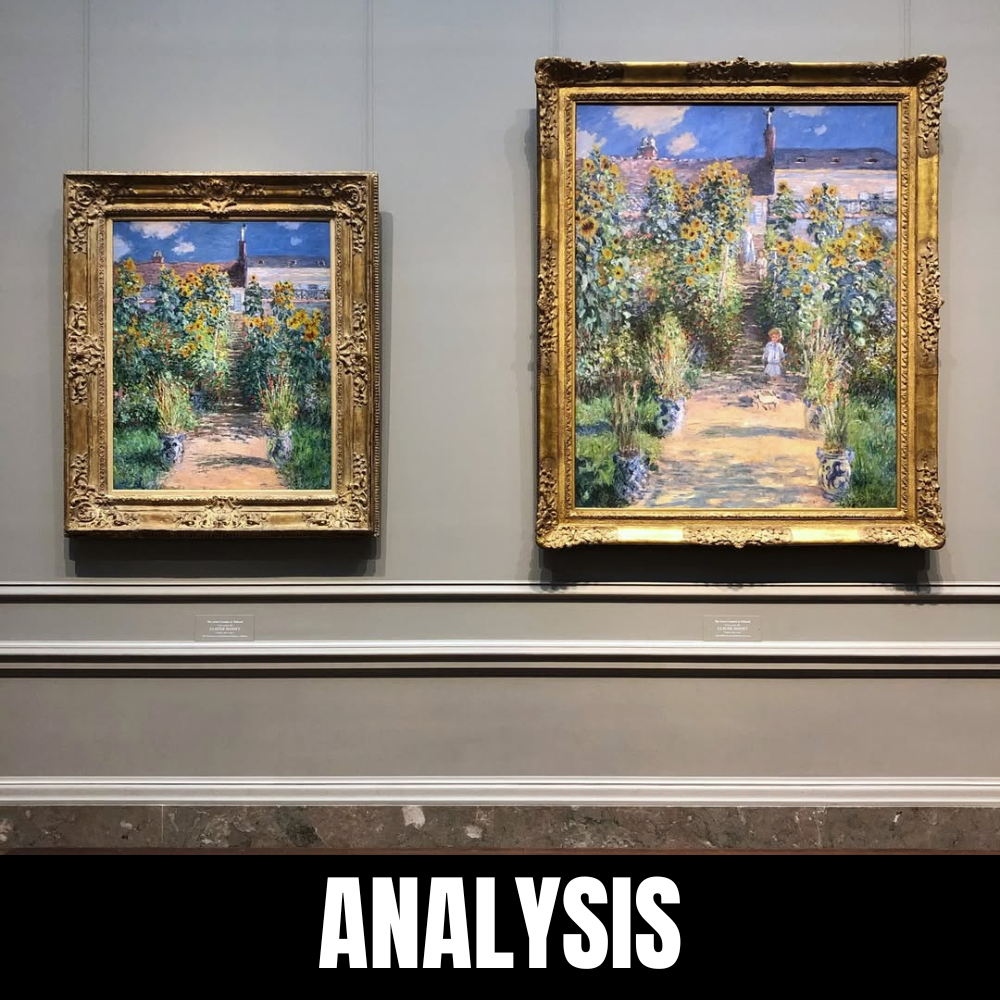
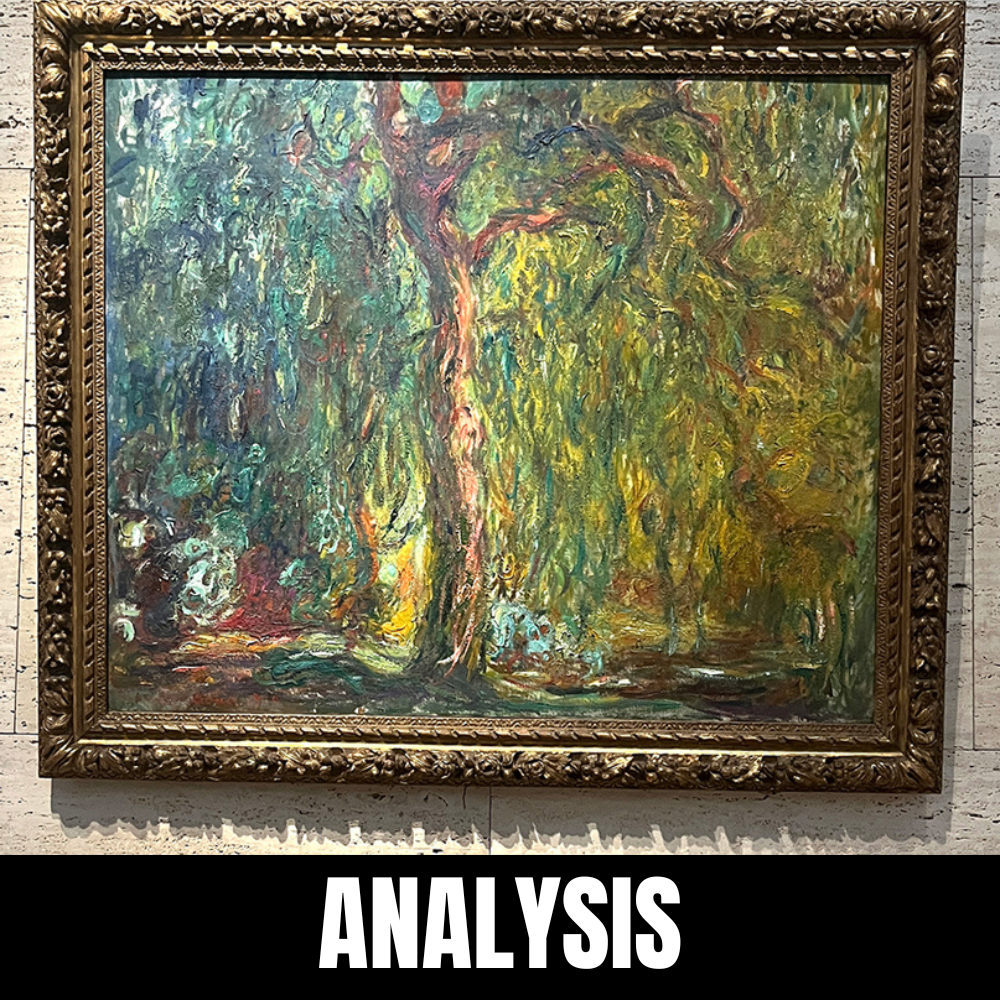
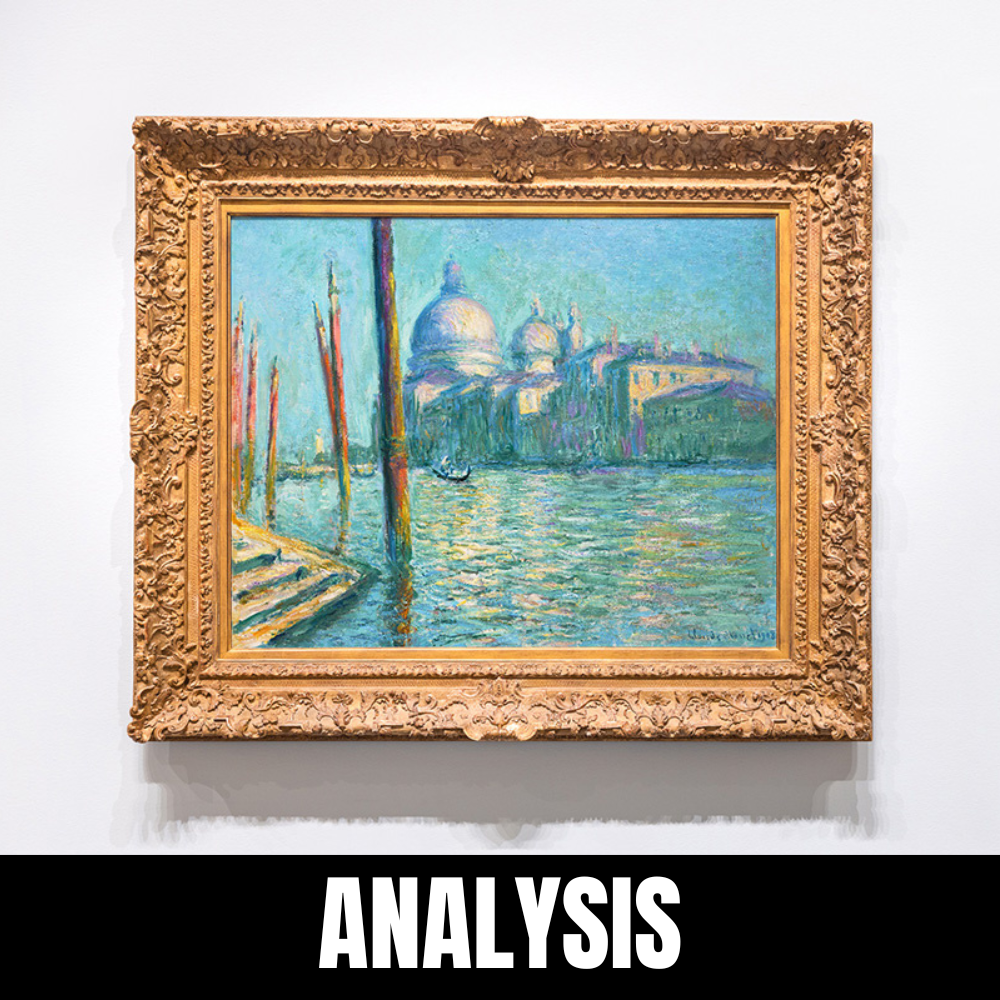
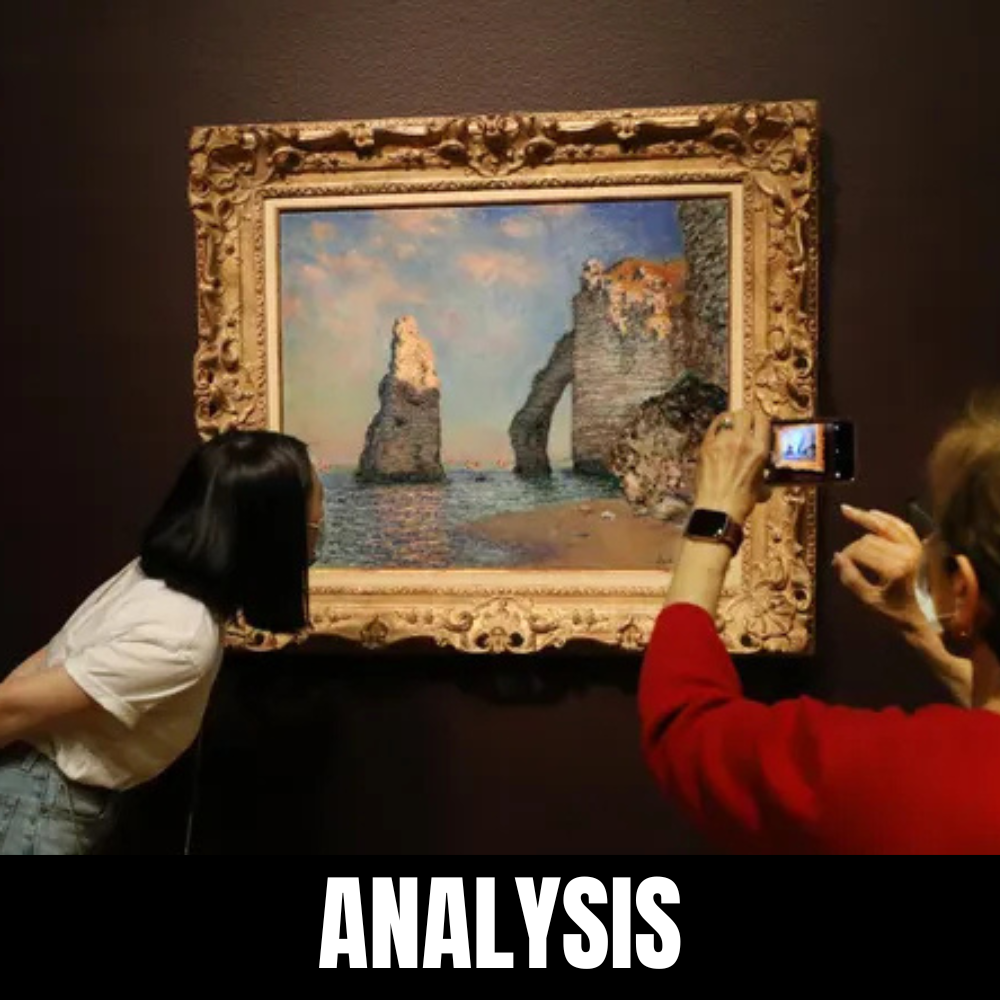
Leave a Reply